Verständnis der Hāngi-Methode des Erdofen-Kochens
46 Minute gelesen Erkunden Sie das Māori-Hāngi: ein Erdofen-Festmahl, das erhitzte Steine, vergrabene Körbe und Dampf benutzt, um Fleisch und Wurzelgemüse mit rauchigem, gemeinschaftlichem Geschmack und kultureller Bedeutung zu bereichern. Oktober 11, 2025 00:07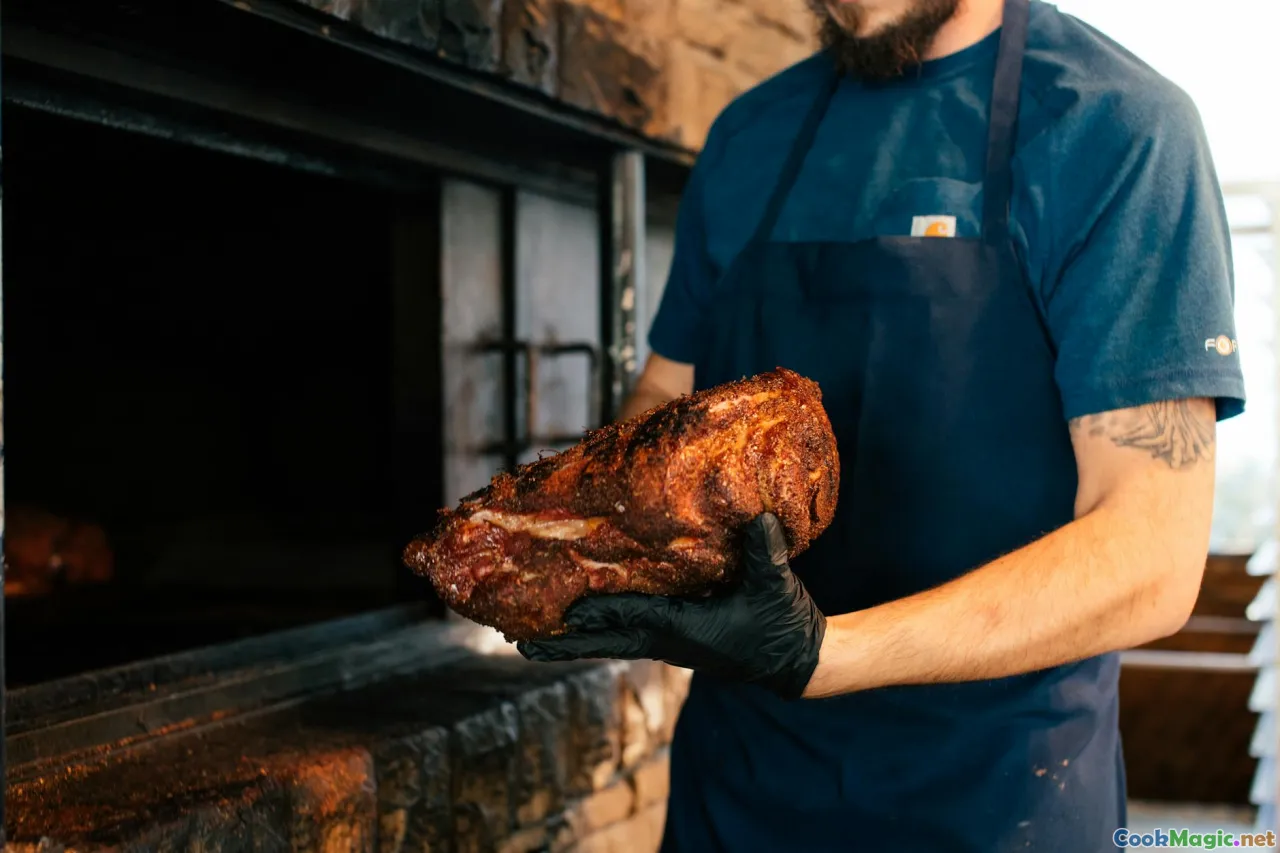
The first time I stood over a smoking pā earth oven, the soil felt warm beneath my boots and the wind carried the breath of manuka, cabbage, and damp flax. It was dawn on the East Coast of Aotearoa, and the sky was a watercolor wash of bruised lavender and peach. Somewhere behind me, a tui clicked in the pōhutukawa as cousins and aunties lifted wet burlap sacks that steamed like hot springs. The stones beneath the ash glowed as if cradling their own sunrise; someone murmured a karakia, and for a brief moment the world held a collective inhale. Then we lowered baskets of meat and kūmara into the earth, sealed it all under a quilt of soaked sacks and soil, and waited the long, anticipatory hours that define the soul of hāngi.\n\nHāngi is New Zealand in the language of heat and patience. It is food coaxed by the whenua, scented by native woodsmoke, bound by family, and softened into tenderness by time. You feel it in the palms of the hands passing shovels and mugs of tea, in the soft give of pumpkin when the lid of earth is lifted, in the shared smile that says, not just that lunch is ready, but that the people are ready, together.\n\n## Whakapapa of the hāngi: where earth and memory cook together\n \nThe word hāngi describes both the method and the meal: an earth oven used by Māori for centuries, long before iron pots or temperature probes. In a world of gadgets, hāngi stands firm as a technology of ingenuity and place. Heated stones, green leaves or cabbage layers, woven or wire baskets of food, a soaking of water-rich sacks or cloth, then a cap of earth to hold in the moisture. The steam does the cooking and the land gives the flavor.\n\nAcross iwi, practices and flavors shift. Some marae use ti kōuka (cabbage tree) leaves, others favor puha, watercress, or the generous, crinkled leaves of everyday cabbage laid down like blankets. The wood, the stones, the soil itself — all contribute character. In Tairāwhiti, I have tasted hāngi with a peppery whisper of horopito, a native bush spice tucked into a leg of lamb. In Waikato, an uncle swore by manuka wood for the fire, claiming it carried a honeyed smoke that clung just right. In Rotorua, geothermal steam complicates the story with sulfur and mineral, creating a distinct, unforgettable profile.\n\nCulturally, hāngi is often woven into ceremony. On a marae, a hāngi might honor manuhiri, greet new whānau, mark a tangihanga, or celebrate Matariki — the Māori new year, when reflection and harvest share the table. Karakia before the oven goes down aligns work and heart. Roles differ with each hapū and whānau: who digs, who prepares, who opens the oven. The knowledge is held in practices that are lived, not just written — a tacit choreography that passes from hand to hand as surely as a warm piece of kūmara.\n\n## The anatomy of a hāngi pit\n
\nThe word hāngi describes both the method and the meal: an earth oven used by Māori for centuries, long before iron pots or temperature probes. In a world of gadgets, hāngi stands firm as a technology of ingenuity and place. Heated stones, green leaves or cabbage layers, woven or wire baskets of food, a soaking of water-rich sacks or cloth, then a cap of earth to hold in the moisture. The steam does the cooking and the land gives the flavor.\n\nAcross iwi, practices and flavors shift. Some marae use ti kōuka (cabbage tree) leaves, others favor puha, watercress, or the generous, crinkled leaves of everyday cabbage laid down like blankets. The wood, the stones, the soil itself — all contribute character. In Tairāwhiti, I have tasted hāngi with a peppery whisper of horopito, a native bush spice tucked into a leg of lamb. In Waikato, an uncle swore by manuka wood for the fire, claiming it carried a honeyed smoke that clung just right. In Rotorua, geothermal steam complicates the story with sulfur and mineral, creating a distinct, unforgettable profile.\n\nCulturally, hāngi is often woven into ceremony. On a marae, a hāngi might honor manuhiri, greet new whānau, mark a tangihanga, or celebrate Matariki — the Māori new year, when reflection and harvest share the table. Karakia before the oven goes down aligns work and heart. Roles differ with each hapū and whānau: who digs, who prepares, who opens the oven. The knowledge is held in practices that are lived, not just written — a tacit choreography that passes from hand to hand as surely as a warm piece of kūmara.\n\n## The anatomy of a hāngi pit\n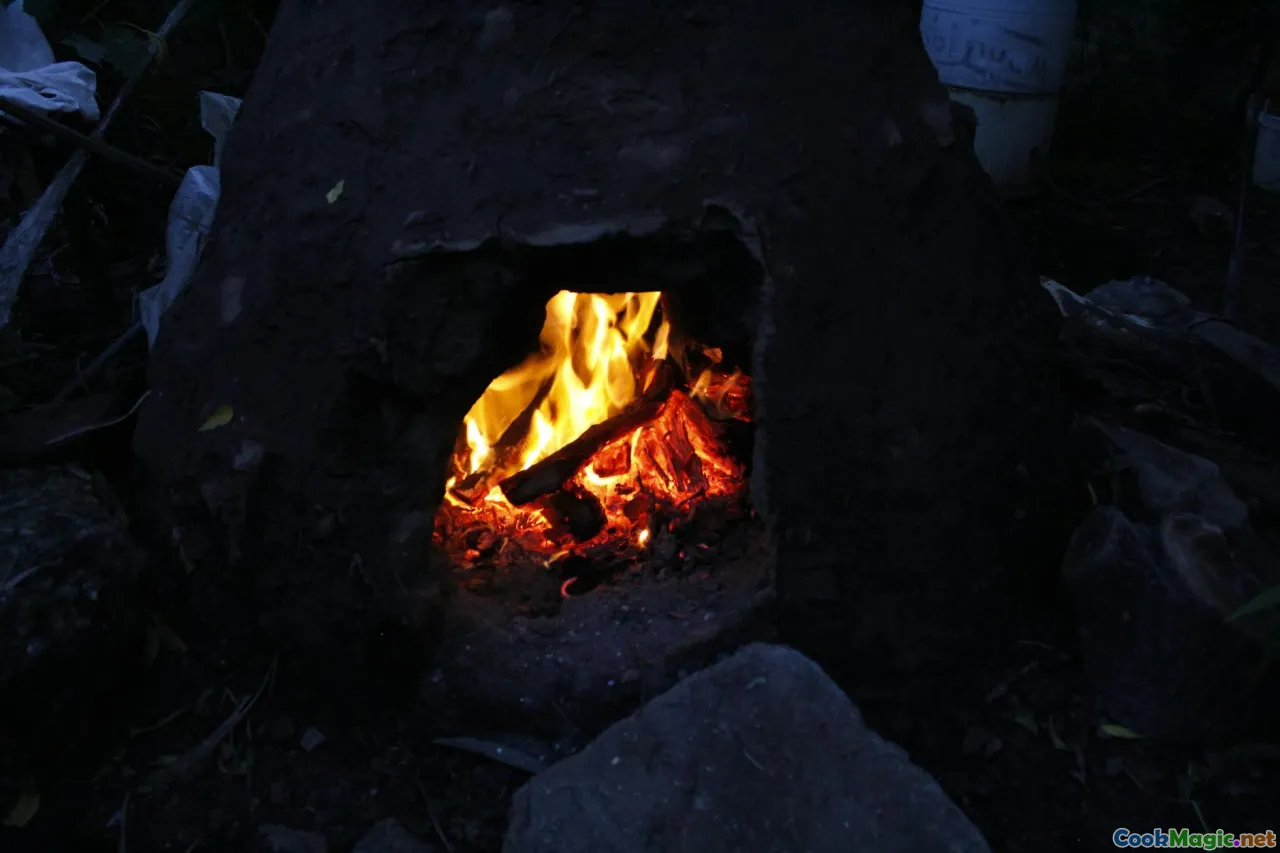 \nAt its core, a hāngi is a carefully managed heat battery buried in the ground. Think of a pit as the vessel, the stones as the stove, the sacks and soil as the lid, and the food as a passenger wrapped in layers of moisture and care.\n\n- Die Grube: Für eine Versammlung von 25 bis 30 Personen ist eine Grube rund 1,2 m Quadrat und 0,6–0,7 m tief üblich. Die Tiefe muss Platz bieten für eine Steinkante, Körbe mit Lebensmitteln und Raum für isolierende Säcke und Erde. Bodentyp matters: sandiger Löß drainiert gut und ist leicht zu graben; schwere Tonerde erfordert mehr Aufwand und kann Feuchtigkeit einschließen, die zu Dampf wird — gut zum Kochen, riskant für Sicherheit, wenn Steine porös sind.\n- Die Steine: Wähle dichte, porenfreie vulkanische Steine – Basalt oder Andesit – die Hitze speichern, ohne zu explodieren. Vermeide Flusssteine; das darin eingeschlossene Wasser kann zu Dampf werden und zerbrechen. In der Praxis braucht man genug Steine, um eine hitzedichte Lage zu bilden, typischerweise 80–150 kg, abhängig von der Grubengröße.\n- Das Feuer: Trockene Harthölzer erzeugen konstante Hitze. Manuka und Kānuka sind klassisch; Makrocarpa kann funktionieren, setzt aber harzreiche Funken frei und verleiht ein anderes Aroma. Niemals behandeltes Holz verwenden. Das Feuer brennt über und um die Steine herum 2–3 Stunden, bis die Steine weißglühend sind und ihre Kanten mit Asche karamellisieren.\n- Die Körbe: Traditionell geflochten, heute oft Drahtkörbe, ausgekleidet mit Kohlblättern oder Ti kōuka-Blättern. Gemüse und Fleisch werden fest gepackt; Lücken sind der Feind eines gleichbleibenden Dampfes. Einige Köche legen Aluminium-Schalen unten hinein, um Säfte für Soße aufzufangen, Puristen bevorzugen jedoch die minimalistische Blatt-Methode.\n- Der Deckel: Schichten vollständig durchweichter Burlap-Säcke oder Baumwolltücher, dann Erde, etwa 10–15 cm tief, die eine Kuppel bildet. Nachdem sie versiegelt sind, sollte kein Dampf entweichen. Eine stille Mulde ist ein gutes Zeichen; ein zischendes, dampfendes Ventil ist ein Ruf zum Handeln — sofort abdichten, sonst droht ein trockenes Hāngi.\n\nWenn man diese Körbe senkt, setzt man sein Vertrauen in Wärmeleitung, Konvektion und die Erinnerung der Steine, die Flammen gesehen haben. Die Erde ist sowohl Ofen als auch Tisch.\n\n## A how-to guide for a home-scale hāngi\n
\nAt its core, a hāngi is a carefully managed heat battery buried in the ground. Think of a pit as the vessel, the stones as the stove, the sacks and soil as the lid, and the food as a passenger wrapped in layers of moisture and care.\n\n- Die Grube: Für eine Versammlung von 25 bis 30 Personen ist eine Grube rund 1,2 m Quadrat und 0,6–0,7 m tief üblich. Die Tiefe muss Platz bieten für eine Steinkante, Körbe mit Lebensmitteln und Raum für isolierende Säcke und Erde. Bodentyp matters: sandiger Löß drainiert gut und ist leicht zu graben; schwere Tonerde erfordert mehr Aufwand und kann Feuchtigkeit einschließen, die zu Dampf wird — gut zum Kochen, riskant für Sicherheit, wenn Steine porös sind.\n- Die Steine: Wähle dichte, porenfreie vulkanische Steine – Basalt oder Andesit – die Hitze speichern, ohne zu explodieren. Vermeide Flusssteine; das darin eingeschlossene Wasser kann zu Dampf werden und zerbrechen. In der Praxis braucht man genug Steine, um eine hitzedichte Lage zu bilden, typischerweise 80–150 kg, abhängig von der Grubengröße.\n- Das Feuer: Trockene Harthölzer erzeugen konstante Hitze. Manuka und Kānuka sind klassisch; Makrocarpa kann funktionieren, setzt aber harzreiche Funken frei und verleiht ein anderes Aroma. Niemals behandeltes Holz verwenden. Das Feuer brennt über und um die Steine herum 2–3 Stunden, bis die Steine weißglühend sind und ihre Kanten mit Asche karamellisieren.\n- Die Körbe: Traditionell geflochten, heute oft Drahtkörbe, ausgekleidet mit Kohlblättern oder Ti kōuka-Blättern. Gemüse und Fleisch werden fest gepackt; Lücken sind der Feind eines gleichbleibenden Dampfes. Einige Köche legen Aluminium-Schalen unten hinein, um Säfte für Soße aufzufangen, Puristen bevorzugen jedoch die minimalistische Blatt-Methode.\n- Der Deckel: Schichten vollständig durchweichter Burlap-Säcke oder Baumwolltücher, dann Erde, etwa 10–15 cm tief, die eine Kuppel bildet. Nachdem sie versiegelt sind, sollte kein Dampf entweichen. Eine stille Mulde ist ein gutes Zeichen; ein zischendes, dampfendes Ventil ist ein Ruf zum Handeln — sofort abdichten, sonst droht ein trockenes Hāngi.\n\nWenn man diese Körbe senkt, setzt man sein Vertrauen in Wärmeleitung, Konvektion und die Erinnerung der Steine, die Flammen gesehen haben. Die Erde ist sowohl Ofen als auch Tisch.\n\n## A how-to guide for a home-scale hāngi\n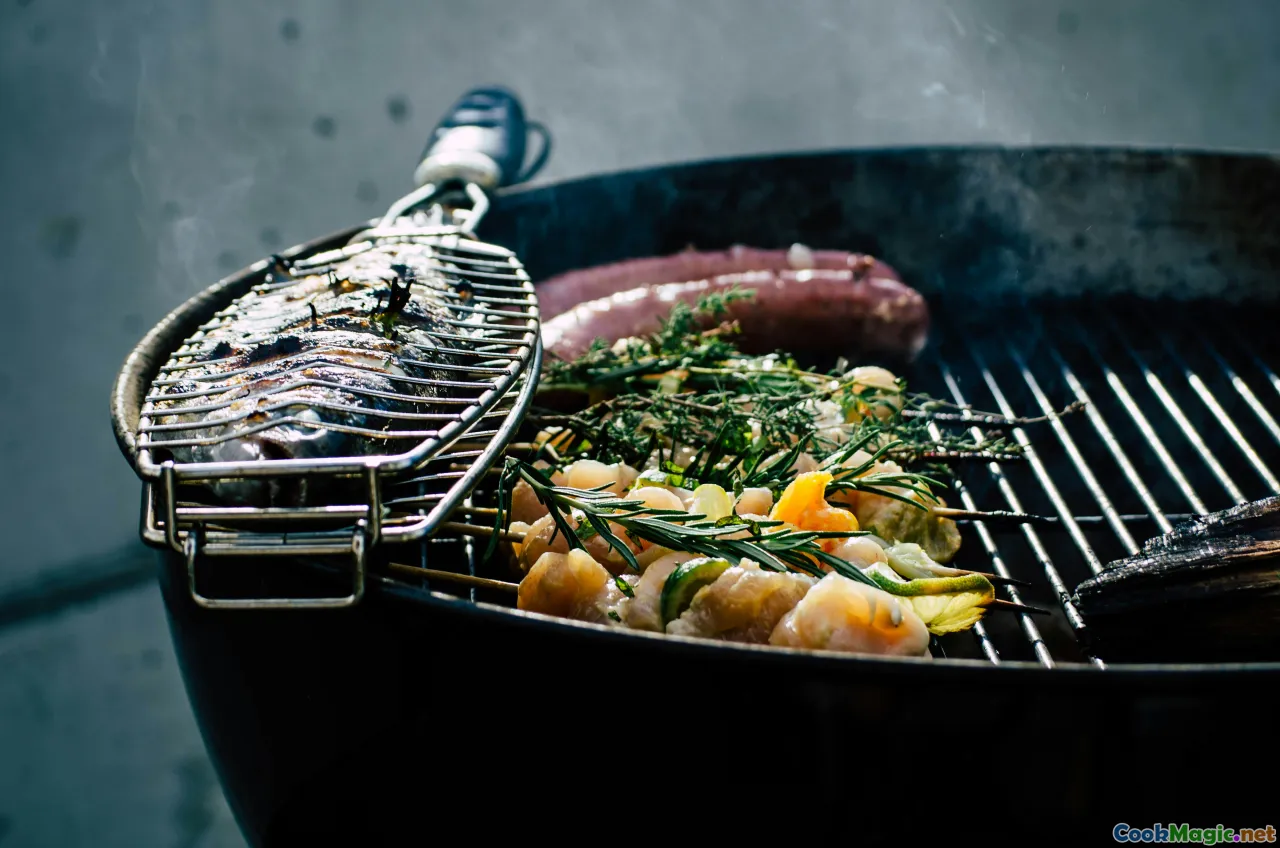 \nIf you have access to safe ground, suitable stones, and a community of willing hands, a home-scale hāngi is not only possible — it is one of the most rewarding ways to cook for a crowd. Here is a field-tested approach that respects tikanga while translating the method for modern backyards.\n\nTimeline for a midday meal (serving around 1:30 pm):\n- 6:00 am: Gather and prep. Begin fire. Soak sacks and cloth.\n- 8:15 am: Stones near white-hot. Prepare baskets.\n- 9:00 am: Rake stones into a level bed. Lower baskets. Seal oven.\n- 9:15 am–1:00 pm: Cook undisturbed.\n- 1:00 pm: Lift hāngi. Rest 10 minutes. Serve.\n\nIngredients for 25 people (approximate):\n- 2 Lammlappen, am Knochen (je 2–2,5 kg)\n- 2 Schweineschultern, mit Haut (je 2,5–3 kg)\n- 3 Ganzhühner (je 1,6–1,8 kg), optional mit Zwiebeln und Kräutern gefüllt\n- 8–10 Kūmara (orange oder rote Haut), groß\n- 15 mittlere Kartoffeln\n- 3 Kürbisse oder große Kronenkürbisse, in dicke Keile geschnitten\n- 3 große Weißkohlköpfe, geviertelt\n- 12 Zwiebeln, geschält\n- Optional: Karotten, Pastinaken, Maiskolben, Muscheln oder Fisch, in Blätter gewickelt, für eine Meeresfrüchte-Platte\n\nSeasoning and aromatics:\n- Meersalz und grober Pfeffer\n- Eine Handvoll Kawakawa-Blätter, leicht zerdrückt\n- Eine Prise Horopito-Pfeffer für Lamm\n- Manuka-Honigglasur für Schweinehaut (dünne Schicht)\n- Frischer Thymian oder Rosmarin für die Hühner (nicht traditionell, aber weit verbreitet)\n\nMethod:\n1) Grube und Feuer vorbereiten. Grube am Vortag ausheben, wenn möglich. Steine in die Mitte legen. Ein großes, strukturiertes Feuer darüber und drumherum aufbauen, Holz kreuzweise stapeln, damit Luft zirkulieren kann. Feuer anzünden und weiterzufüttern, bis die Steine leuchten und das Feuer zu roten Kohlen heruntergebrannt ist.\n2) Abdeckungen einweichen. Burlap-Säcke und Baumwollstoffe in sauberes Wasser tauchen. Sie sollten schwer nass, aber nicht tropfend sein. Etwas zusätzliches Wasser bereithalten, um die Feuchtigkeit bei Bedarf zu erhöhen.\n3) Körbe bauen. Jeden Korb mit Kohl- oder Ti kōuka-Blättern auslegen. Wurzelgemüse unten platzieren; sie benötigen die tiefste, intensivste Hitze. Fleisch kommt über Gemüse, Hühner eng beieinander, Brustseite nach oben, damit das Garen gleichmäßig verläuft. Zwischen Kräuter legen. Oben mit mehr Kohl bedecken; es wird zu einer süßen, buttrigen Decke und schützt auch vor Strahlungswärme.\n4) Steine ebnen. Verwenden Sie eine langstielige Harke und eine Schaufel, um die Steine zu einer kompakten, gleichmäßigen Schicht zu verteilen. Entfernen Sie große brennende Holzstücke, die eher verbrennen als dampfen. Wenn Sie eine Folien-Schale verwenden, legen Sie sie zuerst direkt auf die Steine. Ein leichter Spritzer Wasser auf die Steine kann den Dampf in Gang bringen, aber nicht gießen — Sie wollen Hitze, kein Abkühlen.\n5) Körbe absenken. Dies ist eine Choreografie: zwei starke Personen pro Korb, gleichmäßige Bewegungen, möglichst wenig Hantieren. Körbe nebeneinander oder gestapelt platzieren, wenn Ihre Grube tief ist. Wenn stapeln, zwischen die Körbe ein Blatt bedecktes Regal oder stabile grüne Stöcke legen, damit der Dampf zirkulieren kann.\n6) Ofen versiegeln. Eine dicke Schicht durchweichter Säcke oder Tücher legen, überlappend, um Lücken zu vermeiden. Dann Erde darüber schaufeln, eine kuppelförmige Abdeckung von mindestens 10 cm Tiefe bilden. Hören Sie zu. Wenn Sie ein hohes Pfeifen hören oder Dampf-Wirbel sehen, abdichten mit mehr nassen Tüchern und Erde. Sobald versiegelt, wird das Hāngi zu einer Übung in Beherrschung.\n7) Kochen. Für die oben genannten Mengen sind 3,5 bis 4 Stunden typisch, aber Faktoren wie Wind, Boden und Stein-Hitze spielen eine Rolle. Widerstehen Sie dem Drang, den Deckel früh zu heben. Die Dampf-Umgebung muss stabil bleiben.\n8) Heben und Servieren. Erdreich vorsichtig entfernen und Säcke zurückziehen. Die erste Welle von Aroma — süßer Kürbis, buttriger Kohl, würziges Lamm, ein mineralischer Hauch von Steinwärme — ist der Lohn für Ihre Geduld. Körbe auf die Tische setzen. Alles 10 Minuten ruhen lassen. Dann zerteilen und auf Platten stapeln.\nFood safety note: Even in a traditional method, modern best practice applies. Use a quick-read probe as soon as baskets are out. Poultry should be at least 75 C at the thickest point. Pork shoulder and lamb leg should be well above 70 C for tenderness; many cooks aim for 85–90 C for pulled texture. If any piece is under, set it aside and finish in a hot oven while the rest of the food is served.\n\n## What hāngi tastes like: a sensory map\n
\nIf you have access to safe ground, suitable stones, and a community of willing hands, a home-scale hāngi is not only possible — it is one of the most rewarding ways to cook for a crowd. Here is a field-tested approach that respects tikanga while translating the method for modern backyards.\n\nTimeline for a midday meal (serving around 1:30 pm):\n- 6:00 am: Gather and prep. Begin fire. Soak sacks and cloth.\n- 8:15 am: Stones near white-hot. Prepare baskets.\n- 9:00 am: Rake stones into a level bed. Lower baskets. Seal oven.\n- 9:15 am–1:00 pm: Cook undisturbed.\n- 1:00 pm: Lift hāngi. Rest 10 minutes. Serve.\n\nIngredients for 25 people (approximate):\n- 2 Lammlappen, am Knochen (je 2–2,5 kg)\n- 2 Schweineschultern, mit Haut (je 2,5–3 kg)\n- 3 Ganzhühner (je 1,6–1,8 kg), optional mit Zwiebeln und Kräutern gefüllt\n- 8–10 Kūmara (orange oder rote Haut), groß\n- 15 mittlere Kartoffeln\n- 3 Kürbisse oder große Kronenkürbisse, in dicke Keile geschnitten\n- 3 große Weißkohlköpfe, geviertelt\n- 12 Zwiebeln, geschält\n- Optional: Karotten, Pastinaken, Maiskolben, Muscheln oder Fisch, in Blätter gewickelt, für eine Meeresfrüchte-Platte\n\nSeasoning and aromatics:\n- Meersalz und grober Pfeffer\n- Eine Handvoll Kawakawa-Blätter, leicht zerdrückt\n- Eine Prise Horopito-Pfeffer für Lamm\n- Manuka-Honigglasur für Schweinehaut (dünne Schicht)\n- Frischer Thymian oder Rosmarin für die Hühner (nicht traditionell, aber weit verbreitet)\n\nMethod:\n1) Grube und Feuer vorbereiten. Grube am Vortag ausheben, wenn möglich. Steine in die Mitte legen. Ein großes, strukturiertes Feuer darüber und drumherum aufbauen, Holz kreuzweise stapeln, damit Luft zirkulieren kann. Feuer anzünden und weiterzufüttern, bis die Steine leuchten und das Feuer zu roten Kohlen heruntergebrannt ist.\n2) Abdeckungen einweichen. Burlap-Säcke und Baumwollstoffe in sauberes Wasser tauchen. Sie sollten schwer nass, aber nicht tropfend sein. Etwas zusätzliches Wasser bereithalten, um die Feuchtigkeit bei Bedarf zu erhöhen.\n3) Körbe bauen. Jeden Korb mit Kohl- oder Ti kōuka-Blättern auslegen. Wurzelgemüse unten platzieren; sie benötigen die tiefste, intensivste Hitze. Fleisch kommt über Gemüse, Hühner eng beieinander, Brustseite nach oben, damit das Garen gleichmäßig verläuft. Zwischen Kräuter legen. Oben mit mehr Kohl bedecken; es wird zu einer süßen, buttrigen Decke und schützt auch vor Strahlungswärme.\n4) Steine ebnen. Verwenden Sie eine langstielige Harke und eine Schaufel, um die Steine zu einer kompakten, gleichmäßigen Schicht zu verteilen. Entfernen Sie große brennende Holzstücke, die eher verbrennen als dampfen. Wenn Sie eine Folien-Schale verwenden, legen Sie sie zuerst direkt auf die Steine. Ein leichter Spritzer Wasser auf die Steine kann den Dampf in Gang bringen, aber nicht gießen — Sie wollen Hitze, kein Abkühlen.\n5) Körbe absenken. Dies ist eine Choreografie: zwei starke Personen pro Korb, gleichmäßige Bewegungen, möglichst wenig Hantieren. Körbe nebeneinander oder gestapelt platzieren, wenn Ihre Grube tief ist. Wenn stapeln, zwischen die Körbe ein Blatt bedecktes Regal oder stabile grüne Stöcke legen, damit der Dampf zirkulieren kann.\n6) Ofen versiegeln. Eine dicke Schicht durchweichter Säcke oder Tücher legen, überlappend, um Lücken zu vermeiden. Dann Erde darüber schaufeln, eine kuppelförmige Abdeckung von mindestens 10 cm Tiefe bilden. Hören Sie zu. Wenn Sie ein hohes Pfeifen hören oder Dampf-Wirbel sehen, abdichten mit mehr nassen Tüchern und Erde. Sobald versiegelt, wird das Hāngi zu einer Übung in Beherrschung.\n7) Kochen. Für die oben genannten Mengen sind 3,5 bis 4 Stunden typisch, aber Faktoren wie Wind, Boden und Stein-Hitze spielen eine Rolle. Widerstehen Sie dem Drang, den Deckel früh zu heben. Die Dampf-Umgebung muss stabil bleiben.\n8) Heben und Servieren. Erdreich vorsichtig entfernen und Säcke zurückziehen. Die erste Welle von Aroma — süßer Kürbis, buttriger Kohl, würziges Lamm, ein mineralischer Hauch von Steinwärme — ist der Lohn für Ihre Geduld. Körbe auf die Tische setzen. Alles 10 Minuten ruhen lassen. Dann zerteilen und auf Platten stapeln.\nFood safety note: Even in a traditional method, modern best practice applies. Use a quick-read probe as soon as baskets are out. Poultry should be at least 75 C at the thickest point. Pork shoulder and lamb leg should be well above 70 C for tenderness; many cooks aim for 85–90 C for pulled texture. If any piece is under, set it aside and finish in a hot oven while the rest of the food is served.\n\n## What hāngi tastes like: a sensory map\n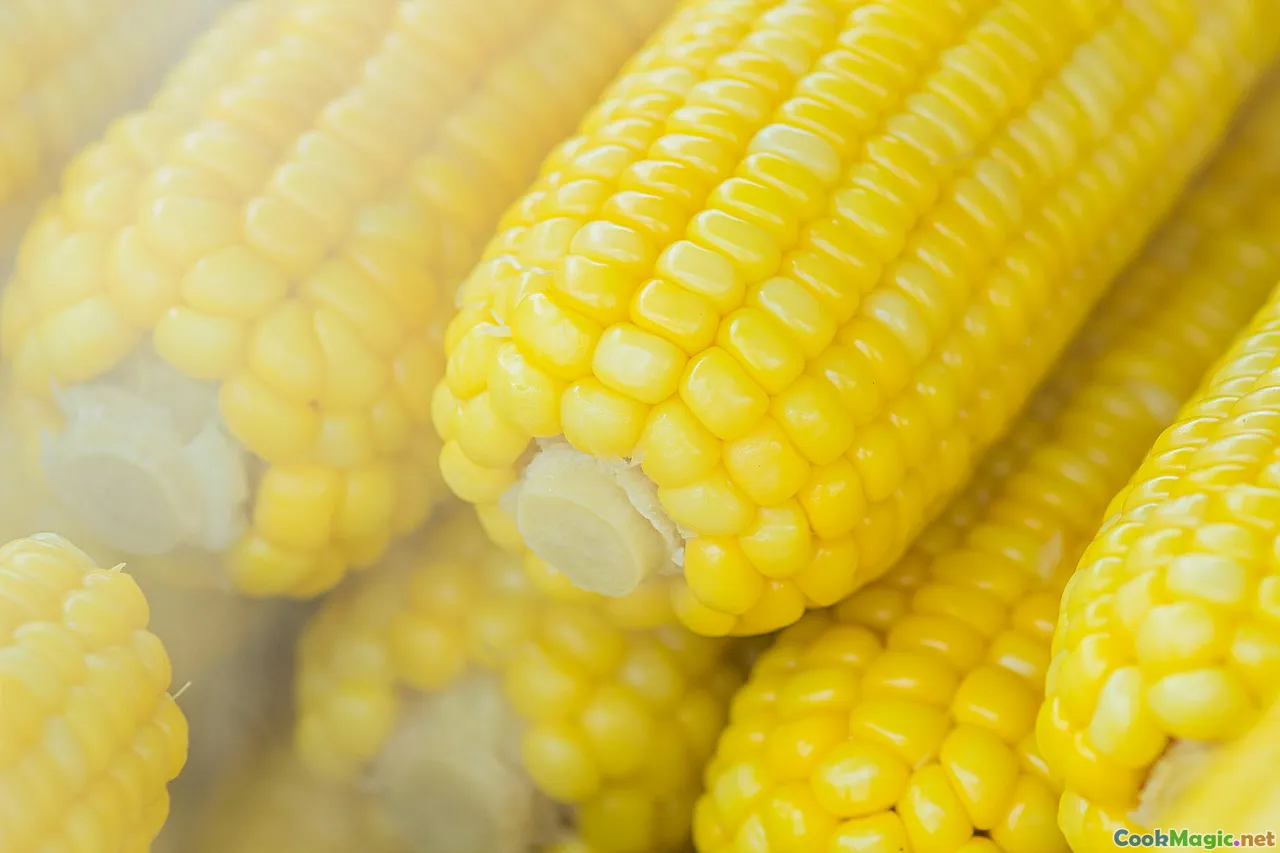 \nImagine the sweetness of kūmara pushed to its far edge, sugars caramelized into toffee notes with a hint of earth. The lamb gives a gentle fog of fat and rosemary, flesh tender enough to pull without tearing fibers. Pork shoulder wears a manuka perfume, a rounded smokiness without bitterness, its skin gone from crackling to a soft, sticky layer that makes fingers shine. Potatoes become buttery by alchemy, edges slightly glassy from starches gelatinizing in a wet-heat sauna. Onion collapses into syrup.\nCabbage is the surprise star: a vegetable so often bullied by boiling, here it becomes custard-soft and sweet, its waters perfumed by meat juices. When you bite into a wedge, it slips and sighs between your teeth, tasting of rain and hearth. Fish in hāngi form is delicate, trembling on the flake; mussels plump and briny, with notes of warmed shell. The smoke is a rumor rather than a proclamation. This is not barbecue bark. It is a deep, round, quartz-glow warmth.\nVisually, hāngi is sepia and gold: pumpkins glowing amber, meat blushing cinnamon, sacks dripping into dark soil. There is no crisp snap or char — and that is precisely the point. Everything yields, everything comforts.\n\n## The science beneath the soil: heat, steam, and pressure\n
\nImagine the sweetness of kūmara pushed to its far edge, sugars caramelized into toffee notes with a hint of earth. The lamb gives a gentle fog of fat and rosemary, flesh tender enough to pull without tearing fibers. Pork shoulder wears a manuka perfume, a rounded smokiness without bitterness, its skin gone from crackling to a soft, sticky layer that makes fingers shine. Potatoes become buttery by alchemy, edges slightly glassy from starches gelatinizing in a wet-heat sauna. Onion collapses into syrup.\nCabbage is the surprise star: a vegetable so often bullied by boiling, here it becomes custard-soft and sweet, its waters perfumed by meat juices. When you bite into a wedge, it slips and sighs between your teeth, tasting of rain and hearth. Fish in hāngi form is delicate, trembling on the flake; mussels plump and briny, with notes of warmed shell. The smoke is a rumor rather than a proclamation. This is not barbecue bark. It is a deep, round, quartz-glow warmth.\nVisually, hāngi is sepia and gold: pumpkins glowing amber, meat blushing cinnamon, sacks dripping into dark soil. There is no crisp snap or char — and that is precisely the point. Everything yields, everything comforts.\n\n## The science beneath the soil: heat, steam, and pressure\n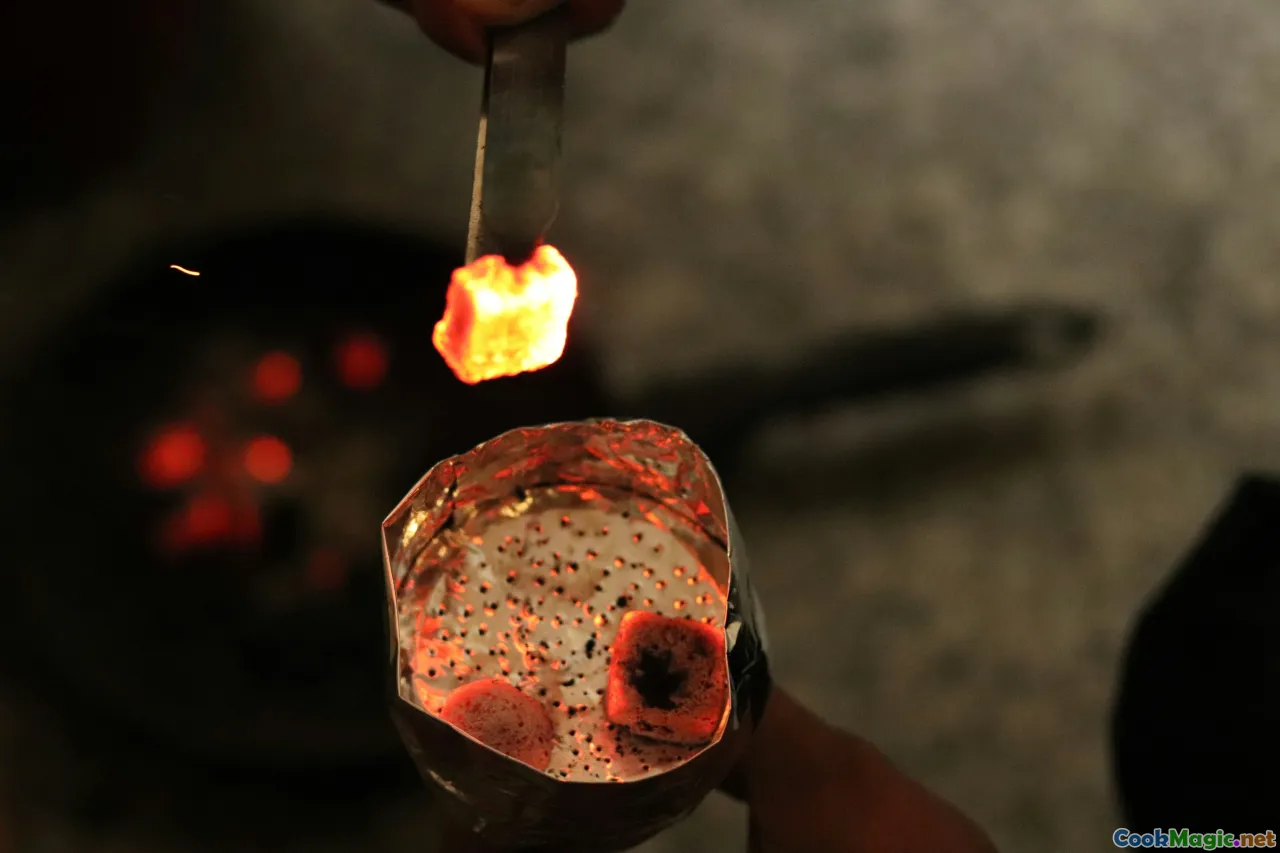 \nA hāngi works because stones bank energy and release it slowly into a sealed, moist environment. The process is a textbook of thermodynamics written in dirt.\n- Heat storage: Vulkanische Steine haben eine hohe thermische Masse. After 2–3 hours of direct flame, they hold enough energy to maintain cooking temperatures for several hours.\n- Moisture management: Water from soaked sacks, high-water-content vegetables, and the natural juices in meat turns into steam. Steam carries energy efficiently, transferring heat fast and evenly. The result is accelerated collagen breakdown without drying.\n- Pressure and sealing: Though not a pressure cooker, a well-sealed hāngi slightly raises internal pressure, pushing thermal energy deeper into the food. Any steam leak is a heat leak; patching is crucial.\n- Flavor chemistry: At wet-bulb temperatures below charring but hot enough for Maillard reactions to whisper, you get subtle browning flavors without a bark. Manuka smoke particulates cling to damp surfaces early on, then recede as steam dominates, delivering smoke as a memory rather than a crust.\nCommon pitfalls and how to avoid them:\n- Exploding stones: Never use river stones or stones with visible pores or cracks. Use volcanic rock sourced from experts or from old, well-known hāngi stones.\n- Dry hāngi: If you see persistent steam plumes after sealing, your cover is thin or misaligned. Add wet sacks and more soil immediately.\n- Scorched bottom layer: Too many active coals under the stones can burn rather than steam. Level the coals away, leaving stones glowing without flame tongues.\n- Undercooked meat: The oven was too cool or unsealed. Next time, fire longer, use more stones, and do not open early. For the current meal, finish underdone pieces in a conventional oven.\n\n## A personal memory: a hāngi at Waiapu and a city backyard reprise\n
\nA hāngi works because stones bank energy and release it slowly into a sealed, moist environment. The process is a textbook of thermodynamics written in dirt.\n- Heat storage: Vulkanische Steine haben eine hohe thermische Masse. After 2–3 hours of direct flame, they hold enough energy to maintain cooking temperatures for several hours.\n- Moisture management: Water from soaked sacks, high-water-content vegetables, and the natural juices in meat turns into steam. Steam carries energy efficiently, transferring heat fast and evenly. The result is accelerated collagen breakdown without drying.\n- Pressure and sealing: Though not a pressure cooker, a well-sealed hāngi slightly raises internal pressure, pushing thermal energy deeper into the food. Any steam leak is a heat leak; patching is crucial.\n- Flavor chemistry: At wet-bulb temperatures below charring but hot enough for Maillard reactions to whisper, you get subtle browning flavors without a bark. Manuka smoke particulates cling to damp surfaces early on, then recede as steam dominates, delivering smoke as a memory rather than a crust.\nCommon pitfalls and how to avoid them:\n- Exploding stones: Never use river stones or stones with visible pores or cracks. Use volcanic rock sourced from experts or from old, well-known hāngi stones.\n- Dry hāngi: If you see persistent steam plumes after sealing, your cover is thin or misaligned. Add wet sacks and more soil immediately.\n- Scorched bottom layer: Too many active coals under the stones can burn rather than steam. Level the coals away, leaving stones glowing without flame tongues.\n- Undercooked meat: The oven was too cool or unsealed. Next time, fire longer, use more stones, and do not open early. For the current meal, finish underdone pieces in a conventional oven.\n\n## A personal memory: a hāngi at Waiapu and a city backyard reprise\n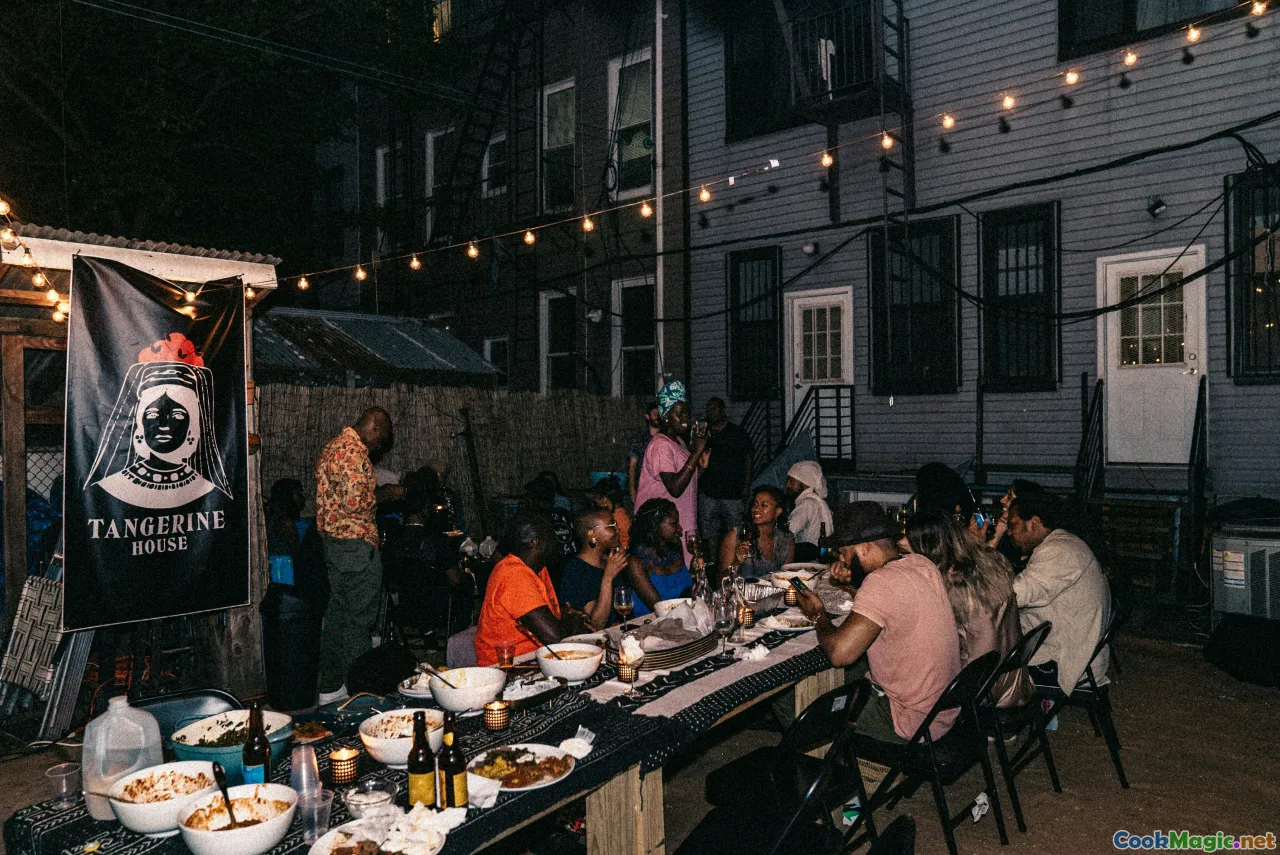 \nOn the Waiapu flats near Ruatoria, the morning we put down the hāngi was damp and sun shy. Kids chased each other between maize stalks and aunties, wrangling onions, told old jokes like treasures polished smooth. A cousin cracked a story about the family dog who once stole a boiled kūmara and buried it like taonga. Someone laughed so hard they whacked their knuckles on the spade.\n\nWe tucked horopito leaves into the lamb and tied the chickens with strips of flax. When the karakia cleared the moment, we lowered the baskets and patted the soil shut. Then the long wait became a rhythm: washing chopping boards, brewing tea, re-telling the story of how Uncle Mereana once drove the tractor with a loaf of rewena bread balanced on the dash. Four hours later, the lifting was like opening a letter from an ancestor. We passed plates piled high: kūmara the color of late afternoon, pork so soft the lines of the knife looked like doodles instead of cuts, cabbage we ate like pastry.\nYears later, in Tāmaki Makaurau, I helped friends do a backyard hāngi for a 40th. Apartment neighbors peered over fences, and the dog, older and wiser, watched with a solemnity I had not seen since that Waiapu morning. We scaled down, used a smaller pit, borrowed wire baskets from a cousin of a cousin. The neighbors brought pavlova. We sealed the oven, then tried to distract ourselves with a game of backyard cricket. When we lifted, the steam drifted up against the city skyline, and for a second the whole street smelled like home.\n\n## Regional expressions: from Rotorua steam to South Island stone\n
\nOn the Waiapu flats near Ruatoria, the morning we put down the hāngi was damp and sun shy. Kids chased each other between maize stalks and aunties, wrangling onions, told old jokes like treasures polished smooth. A cousin cracked a story about the family dog who once stole a boiled kūmara and buried it like taonga. Someone laughed so hard they whacked their knuckles on the spade.\n\nWe tucked horopito leaves into the lamb and tied the chickens with strips of flax. When the karakia cleared the moment, we lowered the baskets and patted the soil shut. Then the long wait became a rhythm: washing chopping boards, brewing tea, re-telling the story of how Uncle Mereana once drove the tractor with a loaf of rewena bread balanced on the dash. Four hours later, the lifting was like opening a letter from an ancestor. We passed plates piled high: kūmara the color of late afternoon, pork so soft the lines of the knife looked like doodles instead of cuts, cabbage we ate like pastry.\nYears later, in Tāmaki Makaurau, I helped friends do a backyard hāngi for a 40th. Apartment neighbors peered over fences, and the dog, older and wiser, watched with a solemnity I had not seen since that Waiapu morning. We scaled down, used a smaller pit, borrowed wire baskets from a cousin of a cousin. The neighbors brought pavlova. We sealed the oven, then tried to distract ourselves with a game of backyard cricket. When we lifted, the steam drifted up against the city skyline, and for a second the whole street smelled like home.\n\n## Regional expressions: from Rotorua steam to South Island stone\n \nAotearoa is not one flavor. Hāngi tells regional stories.\n- Rotorua and Whakarewarewa: Here, the earth exhales visibly. Geothermal vents and pools steam and simmer, and some cooks use steam boxes over natural vents to cook hāngi-style kai. Corn on the cob lowered into a boiling pool tastes mineral-rich, and steam-cooked pudding comes with a whiff of sulfur that whispers of volcanoes. Places like Te Puia, Mitai Māori Village, and Whakarewarewa Village host hāngi and performance nights where visitors can taste a polished version of the tradition.\n- Tāmaki Makaurau: In the city, practicality rules. Portable gas-fired steamers branded as kai cookers, steel drum hāngi, and even hāngi-in-a-box setups have emerged for fundraisers and sports clubs. While purists debate authenticity, these innovations keep the flavor and the spirit alive where digging is not an option.\n- Te Tai Tokerau to Te Waipounamu: From Northland to the South Island, wood choice and soil character shift. South Island hāngi sometimes benefit from cooler, denser soils; timing tweaks matter. On Banks Peninsula, basaltic stone is plentiful; on the West Coast, weather is the boss — plan accordingly.\n\n## Hāngi and its cousins: umu, imu, and pachamanca\n
\nAotearoa is not one flavor. Hāngi tells regional stories.\n- Rotorua and Whakarewarewa: Here, the earth exhales visibly. Geothermal vents and pools steam and simmer, and some cooks use steam boxes over natural vents to cook hāngi-style kai. Corn on the cob lowered into a boiling pool tastes mineral-rich, and steam-cooked pudding comes with a whiff of sulfur that whispers of volcanoes. Places like Te Puia, Mitai Māori Village, and Whakarewarewa Village host hāngi and performance nights where visitors can taste a polished version of the tradition.\n- Tāmaki Makaurau: In the city, practicality rules. Portable gas-fired steamers branded as kai cookers, steel drum hāngi, and even hāngi-in-a-box setups have emerged for fundraisers and sports clubs. While purists debate authenticity, these innovations keep the flavor and the spirit alive where digging is not an option.\n- Te Tai Tokerau to Te Waipounamu: From Northland to the South Island, wood choice and soil character shift. South Island hāngi sometimes benefit from cooler, denser soils; timing tweaks matter. On Banks Peninsula, basaltic stone is plentiful; on the West Coast, weather is the boss — plan accordingly.\n\n## Hāngi and its cousins: umu, imu, and pachamanca\n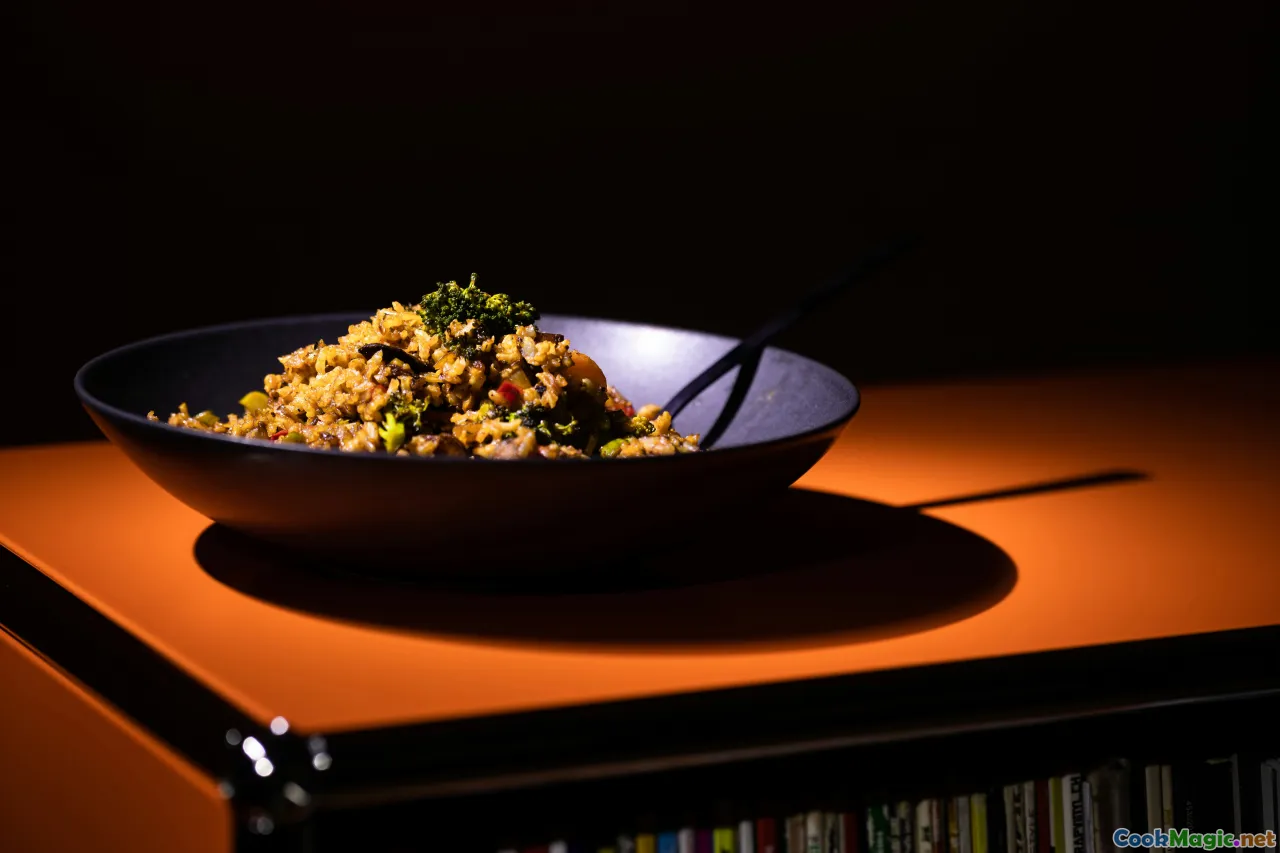 \nHāngi belongs to a global family of earth ovens — ingenious answers to feeding many with simple tools.\n- Samoan umu: Built on the surface, not buried. Stones are heated, food is wrapped in banana and breadfruit leaves, then covered with coconut frond mats and left to steam. The flavor is greener and leafier, with pronounced smokiness from the open arrangement.\n- Hawaiian imu: Closer to hāngi in the burying. Banana trunks and ti leaves supply moisture, stones supply heat. The star is often kalo (taro) and kalua pig, whose flesh tastes sweet-smoky from ti leaves and kiawe wood.\n- Peruvian pachamanca: Andes-style earth oven using heated stones to cook meat, potatoes, corn, and fava beans, often with huacatay and chincho herbs. The spice profile is completely different, but the deep tenderness, the earth’s hush, and the communal labor ring familiar.\nComparison clarifies what makes hāngi hāngi: a restrained, steam-forward palate, a cabbage-and-stone signature, and an emphasis on sweetness and softness rather than char.\n\n## The menu around a hāngi: plates, sides, and sweets\n
\nHāngi belongs to a global family of earth ovens — ingenious answers to feeding many with simple tools.\n- Samoan umu: Built on the surface, not buried. Stones are heated, food is wrapped in banana and breadfruit leaves, then covered with coconut frond mats and left to steam. The flavor is greener and leafier, with pronounced smokiness from the open arrangement.\n- Hawaiian imu: Closer to hāngi in the burying. Banana trunks and ti leaves supply moisture, stones supply heat. The star is often kalo (taro) and kalua pig, whose flesh tastes sweet-smoky from ti leaves and kiawe wood.\n- Peruvian pachamanca: Andes-style earth oven using heated stones to cook meat, potatoes, corn, and fava beans, often with huacatay and chincho herbs. The spice profile is completely different, but the deep tenderness, the earth’s hush, and the communal labor ring familiar.\nComparison clarifies what makes hāngi hāngi: a restrained, steam-forward palate, a cabbage-and-stone signature, and an emphasis on sweetness and softness rather than char.\n\n## The menu around a hāngi: plates, sides, and sweets\n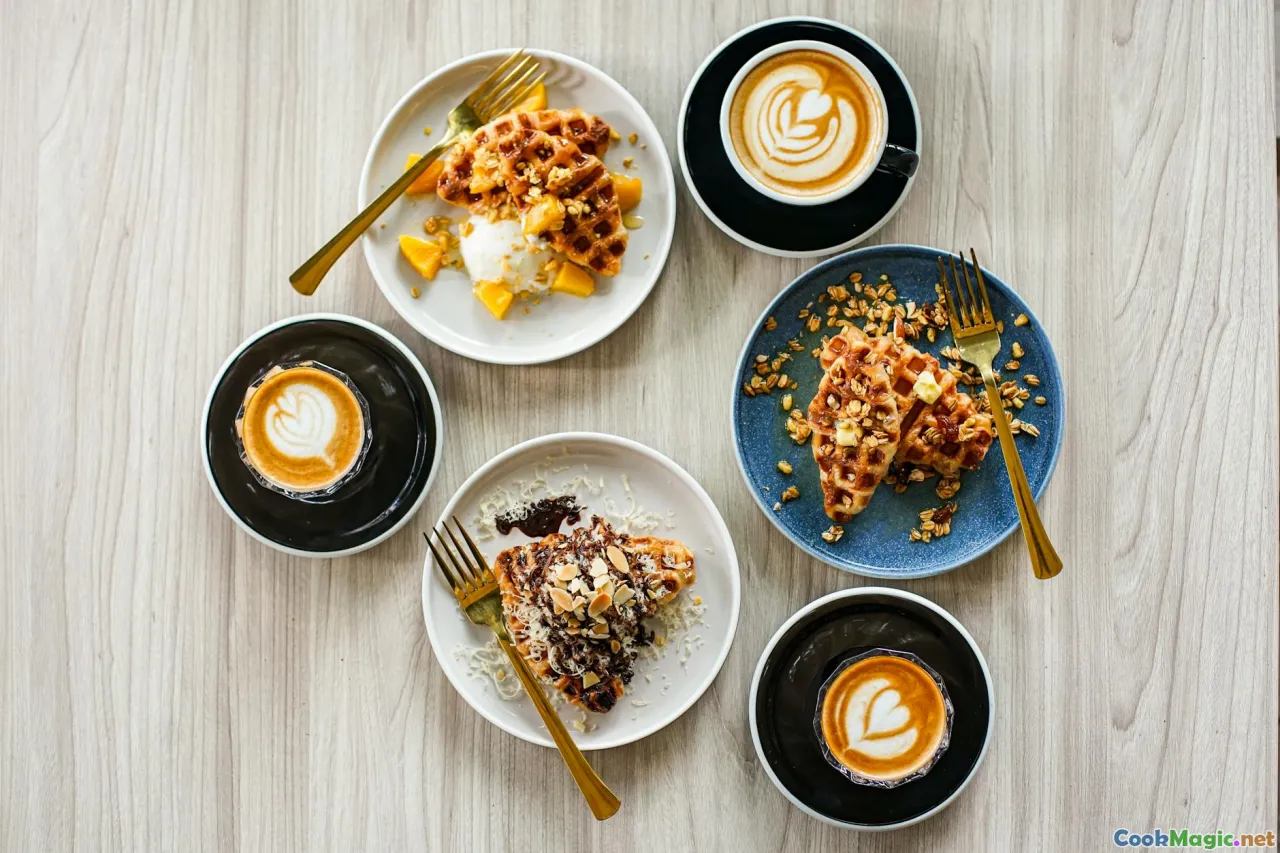 \nA hāngi meal can be as minimalist as meat and root vegetables, or it can stretch into a spread that reads like a love letter to New Zealand produce.\n- The essentials: Pork shoulder, lamb leg, chicken, kūmara, potatoes, pumpkin, cabbage, onions.\n- Greens and herbs: Watercress salad brightens the plate. Toss with thin-sliced red onion, lemon, and a pinch of flaky salt. Pikopiko fern fronds dressed simply can be a seasonal treat. A sprinkle of kawakawa or chopped parsley adds lift.\n- Bread: Rewena bread, naturally leavened with a potato starter, is perfectly at home with hāngi. Tear hunks to mop juices. Butter optional; nobody will judge.\n- Chutneys and sauces: A quick apple and kawakawa chutney, a spoon of mint sauce with lamb, a drizzle of pan juices if you captured them in a tray under the baskets. A little acidity helps balance richness.\n- Seafood additions: In coastal regions, trays of mussels, whole snapper, or kahawai wrapped in leaves find their way into a hāngi. The fish cooks fast; position it near the top to avoid overcooking.\n- Dessert: Not cooked in the hāngi traditionally, but on big feast days you might see steam puddings finished in a separate pot or rewena bread fritters dusted with sugar and served with cream. In Rotorua, geothermal-steamed pudding is a rightful star.\nPro tip: Build a flavor herb bundle for each meat cut — kawakawa and thyme for lamb, rosemary and horopito for pork, lemon and parsley for chicken — and tuck it under the top cabbage layer for a whisper of aromatics without overpowering the core hāngi taste.\n\n## Technique clinic: packing, sealing, and timing like a pro\n
\nA hāngi meal can be as minimalist as meat and root vegetables, or it can stretch into a spread that reads like a love letter to New Zealand produce.\n- The essentials: Pork shoulder, lamb leg, chicken, kūmara, potatoes, pumpkin, cabbage, onions.\n- Greens and herbs: Watercress salad brightens the plate. Toss with thin-sliced red onion, lemon, and a pinch of flaky salt. Pikopiko fern fronds dressed simply can be a seasonal treat. A sprinkle of kawakawa or chopped parsley adds lift.\n- Bread: Rewena bread, naturally leavened with a potato starter, is perfectly at home with hāngi. Tear hunks to mop juices. Butter optional; nobody will judge.\n- Chutneys and sauces: A quick apple and kawakawa chutney, a spoon of mint sauce with lamb, a drizzle of pan juices if you captured them in a tray under the baskets. A little acidity helps balance richness.\n- Seafood additions: In coastal regions, trays of mussels, whole snapper, or kahawai wrapped in leaves find their way into a hāngi. The fish cooks fast; position it near the top to avoid overcooking.\n- Dessert: Not cooked in the hāngi traditionally, but on big feast days you might see steam puddings finished in a separate pot or rewena bread fritters dusted with sugar and served with cream. In Rotorua, geothermal-steamed pudding is a rightful star.\nPro tip: Build a flavor herb bundle for each meat cut — kawakawa and thyme for lamb, rosemary and horopito for pork, lemon and parsley for chicken — and tuck it under the top cabbage layer for a whisper of aromatics without overpowering the core hāngi taste.\n\n## Technique clinic: packing, sealing, and timing like a pro\n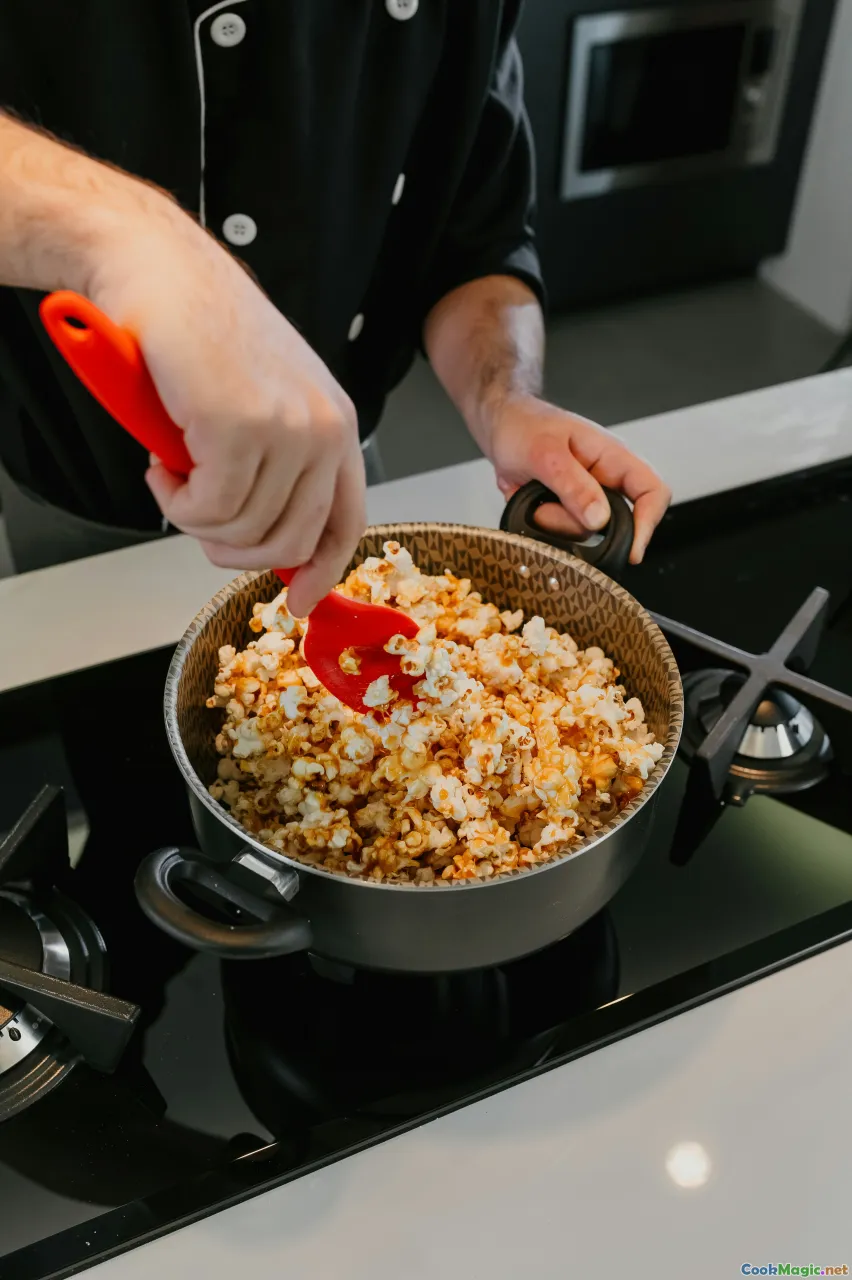 \nOver the years, a few practical habits separate good hāngi from unforgettable hāngi.\n- Pack tight, but not suffocating: Air gaps become steam chutes that overcook one spot and undercook another. Nestle vegetables and meats so they support each other without crushing.\n- Leaf layers as insurance: Cabbage or ti leaves act as a natural gasket and baster. The leaves protect from radiant heat and release moisture slowly.\n- Wet sacks, not dripping: If covers are too wet, you risk cooling the oven prematurely. Aim for heavy damp — when you press the sack, a few drops fall, not a stream.\n- Soil dome shape: A gentle dome sheds rain and directs any internal steam away from seams. Flat tops are more prone to pooling and leaks.\n- Listening for leaks: Put your ear near (not over) the mound. A soft hiss is normal for the first minutes. Sustained whistling means a leak; patch with more wet cloth and soil.\n- The no-peek rule: Opening early dumps steam and drops the temperature. Plan your timeline conservatively so you can wait it out.\n- Meat prep: Dry-brine large cuts the night before with salt to help seasoning penetrate and juices hold. Avoid sugary marinades; they can scorch early and taste muddy after a long steam.\n- Catching juices: If you want gravy, place a shallow foil tray under the meat basket, lined with leaves to prevent scorching. Add a slosh of water or stock. Degrease and season after cooking.\n- Vegetarian love: Stuff a whole pumpkin with wild rice, mushroom, and herbs; wrap in leaves and place high in the basket. Corn, kūmara, and cabbage need no apology and might steal the show.\n\n## Tools and sourcing: what you need and where to get it\n
\nOver the years, a few practical habits separate good hāngi from unforgettable hāngi.\n- Pack tight, but not suffocating: Air gaps become steam chutes that overcook one spot and undercook another. Nestle vegetables and meats so they support each other without crushing.\n- Leaf layers as insurance: Cabbage or ti leaves act as a natural gasket and baster. The leaves protect from radiant heat and release moisture slowly.\n- Wet sacks, not dripping: If covers are too wet, you risk cooling the oven prematurely. Aim for heavy damp — when you press the sack, a few drops fall, not a stream.\n- Soil dome shape: A gentle dome sheds rain and directs any internal steam away from seams. Flat tops are more prone to pooling and leaks.\n- Listening for leaks: Put your ear near (not over) the mound. A soft hiss is normal for the first minutes. Sustained whistling means a leak; patch with more wet cloth and soil.\n- The no-peek rule: Opening early dumps steam and drops the temperature. Plan your timeline conservatively so you can wait it out.\n- Meat prep: Dry-brine large cuts the night before with salt to help seasoning penetrate and juices hold. Avoid sugary marinades; they can scorch early and taste muddy after a long steam.\n- Catching juices: If you want gravy, place a shallow foil tray under the meat basket, lined with leaves to prevent scorching. Add a slosh of water or stock. Degrease and season after cooking.\n- Vegetarian love: Stuff a whole pumpkin with wild rice, mushroom, and herbs; wrap in leaves and place high in the basket. Corn, kūmara, and cabbage need no apology and might steal the show.\n\n## Tools and sourcing: what you need and where to get it\n \n- Stones: Volcanic stones from landscaping suppliers or rural quarries that understand hāngi needs. Ask specifically for basalt or andesite and confirm they are dry and non-porous.\n- Firewood: Dry manuka or kānuka if possible. Otherwise, seasoned hardwood. Never use treated timber, pallets, or painted wood.\n- Baskets: Wire baskets with sturdy handles. Some metal fabricators in New Zealand make hāngi-specific cages. Line with leaves, not plastic.\n- Covers: Burlap sacks (undyed, clean) or thick cotton sheets dedicated to cooking. Soak thoroughly before use.\n- Tools: Shovels, a long-handled rake, heavy-duty gloves, a bucket for water, a hose for safety, and a reliable probe thermometer.\n- Leaf layers: Cabbage is the workhorse, available year-round. If you have access to ti kōuka leaves, they add aroma and structure.\n- Permits and location: In urban areas, check with local councils about open fires and ground disturbance. Backyard hāngi may require a permit or be restricted during fire ban seasons.\n\n## Safety and stewardship: caring for people and place\n
\n- Stones: Volcanic stones from landscaping suppliers or rural quarries that understand hāngi needs. Ask specifically for basalt or andesite and confirm they are dry and non-porous.\n- Firewood: Dry manuka or kānuka if possible. Otherwise, seasoned hardwood. Never use treated timber, pallets, or painted wood.\n- Baskets: Wire baskets with sturdy handles. Some metal fabricators in New Zealand make hāngi-specific cages. Line with leaves, not plastic.\n- Covers: Burlap sacks (undyed, clean) or thick cotton sheets dedicated to cooking. Soak thoroughly before use.\n- Tools: Shovels, a long-handled rake, heavy-duty gloves, a bucket for water, a hose for safety, and a reliable probe thermometer.\n- Leaf layers: Cabbage is the workhorse, available year-round. If you have access to ti kōuka leaves, they add aroma and structure.\n- Permits and location: In urban areas, check with local councils about open fires and ground disturbance. Backyard hāngi may require a permit or be restricted during fire ban seasons.\n\n## Safety and stewardship: caring for people and place\n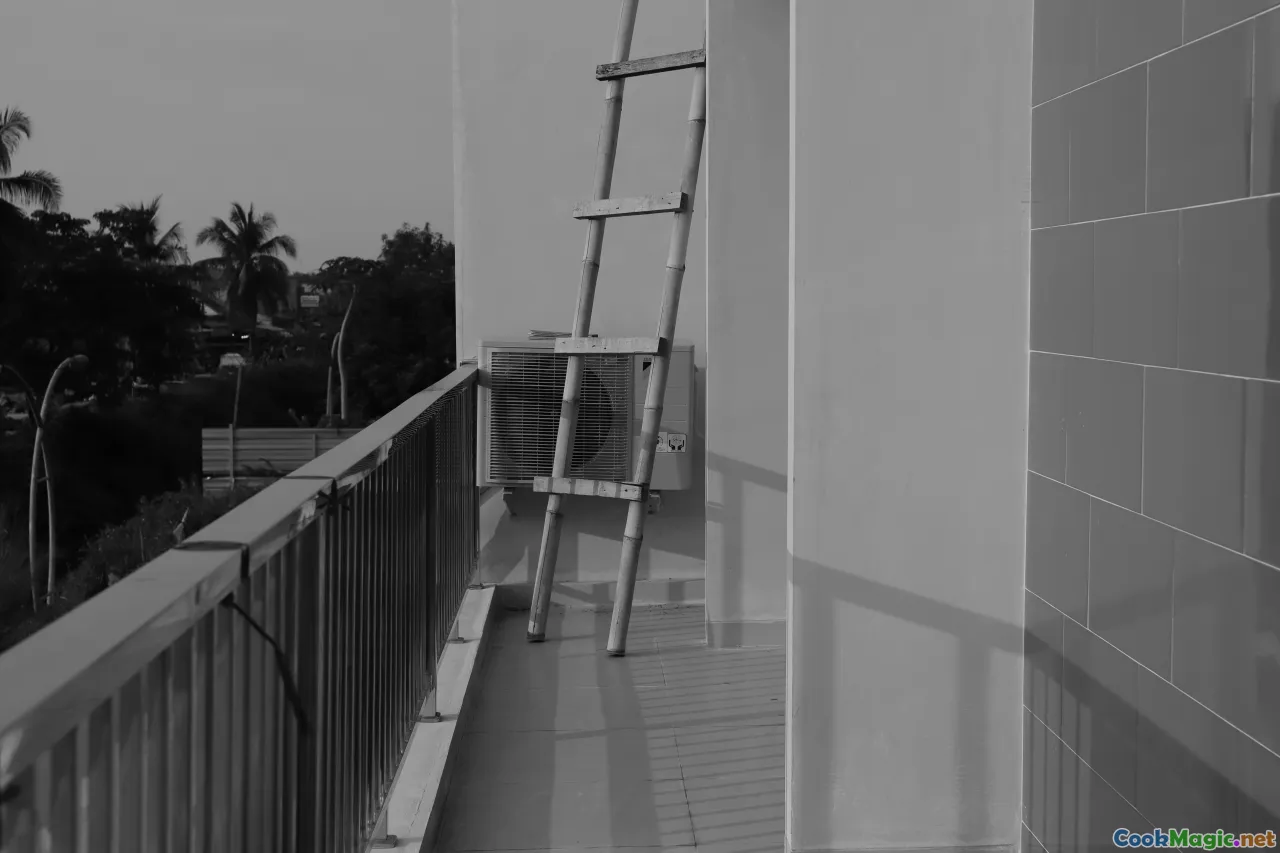 \nA hāngi is as much a relationship with the land as it is a recipe. Approach with care.\n- Fire safety: Have water and a hose ready. Clear dry grass around the pit. In windy conditions, think twice. If there is a fire ban, use a legal gas-fired hāngi cooker instead.\n- Stone safety: Only use vetted stones. Heat them gradually the first time to drive out hidden moisture.\n- Food safety: Keep raw meats cold until just before packing. Work clean. Use separate boards for vegetables and meat. Probe temperatures when you pull the baskets.\n- Respect tikanga: If cooking on a marae or with Māori hosts, follow their guidance on roles, karakia, and protocols. If you are a guest, offer to help, listen more than you speak, and accept instructions with good grace.\n- Land care: Return the pit to as close to original as possible. Replace topsoil and grass. Do not dump ash or stones where they could harm waterways or native plants.\n- Sustainable choices: Choose reusable cloths over foil when possible. Source local, seasonal vegetables. Share leftovers widely — this is a cuisine of abundance, not waste.\n\n## Modern hāngi innovations: when tradition meets ingenuity\n
\nA hāngi is as much a relationship with the land as it is a recipe. Approach with care.\n- Fire safety: Have water and a hose ready. Clear dry grass around the pit. In windy conditions, think twice. If there is a fire ban, use a legal gas-fired hāngi cooker instead.\n- Stone safety: Only use vetted stones. Heat them gradually the first time to drive out hidden moisture.\n- Food safety: Keep raw meats cold until just before packing. Work clean. Use separate boards for vegetables and meat. Probe temperatures when you pull the baskets.\n- Respect tikanga: If cooking on a marae or with Māori hosts, follow their guidance on roles, karakia, and protocols. If you are a guest, offer to help, listen more than you speak, and accept instructions with good grace.\n- Land care: Return the pit to as close to original as possible. Replace topsoil and grass. Do not dump ash or stones where they could harm waterways or native plants.\n- Sustainable choices: Choose reusable cloths over foil when possible. Source local, seasonal vegetables. Share leftovers widely — this is a cuisine of abundance, not waste.\n\n## Modern hāngi innovations: when tradition meets ingenuity\n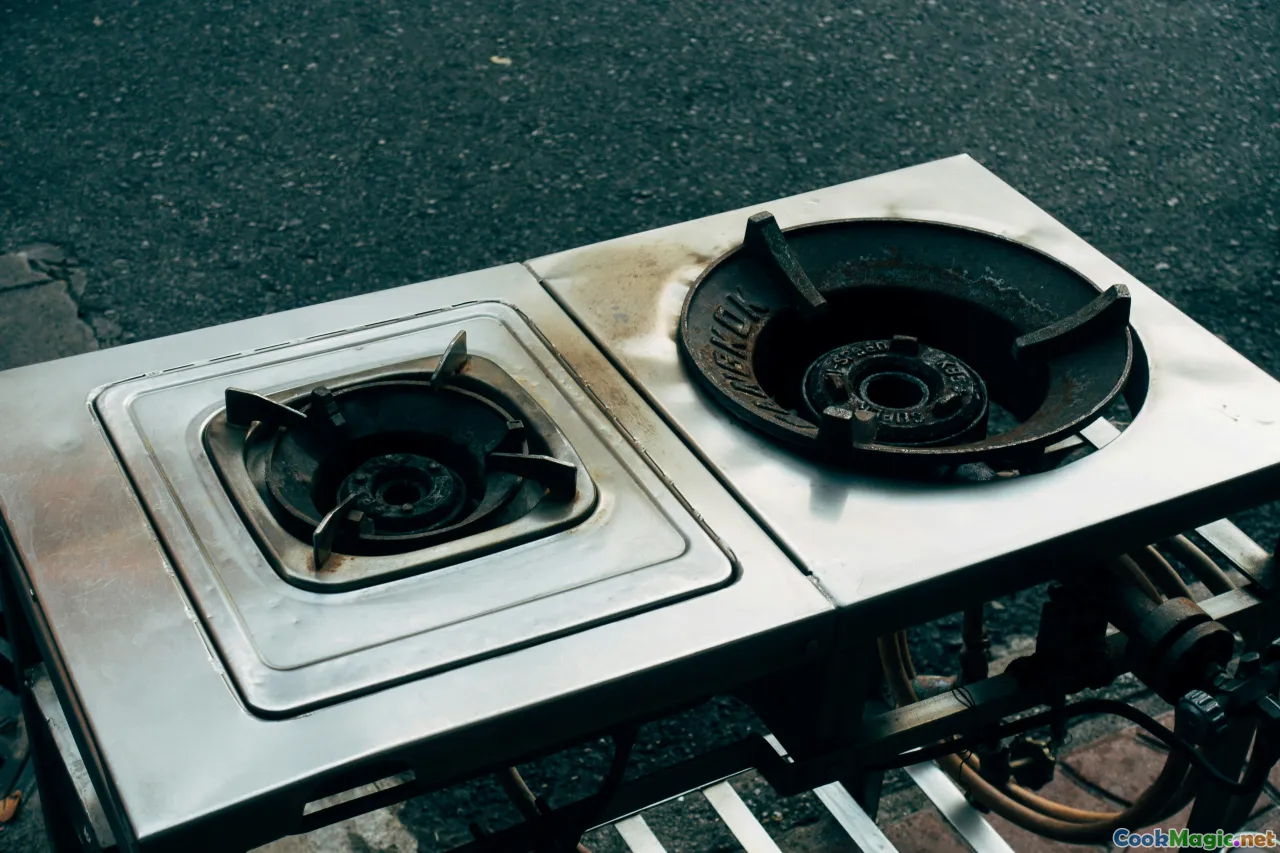 \nInnovation has always lived alongside tradition in New Zealand cuisine. When city life or weather rules out digging, cooks turn to alternatives that honor the spirit if not the exact letter of the method.\n- Hāngi-in-a-box: Steel-framed boxes heated by gas or wood chips. They create a steam environment around baskets that mimic the tenderness of a pit. You lose the soil aroma, but gain predictability and access.\n- Kai cookers: Trailer-mounted systems with multiple compartments. Popular for fundraisers at sports grounds and community events. They often churn out hundreds of portions with admirable consistency.\n- Hybrid methods: Some cooks heat stones with gas burners in metal troughs, then load baskets and seal with wet cloth and a lid. Purists may raise an eyebrow, but the flavor is closer to traditional than you might expect.\n- Geothermal kitchens: In Rotorua, steam and boiling pools do the heavy lifting. The science is the same; the scent is a gift of the land’s geology.\nChoosing a modern method does not have to mean abandoning the values that make hāngi powerful: patience, seasonality, abundance shared with whānau and community.\n\n## Notable places to experience hāngi in Aotearoa\n
\nInnovation has always lived alongside tradition in New Zealand cuisine. When city life or weather rules out digging, cooks turn to alternatives that honor the spirit if not the exact letter of the method.\n- Hāngi-in-a-box: Steel-framed boxes heated by gas or wood chips. They create a steam environment around baskets that mimic the tenderness of a pit. You lose the soil aroma, but gain predictability and access.\n- Kai cookers: Trailer-mounted systems with multiple compartments. Popular for fundraisers at sports grounds and community events. They often churn out hundreds of portions with admirable consistency.\n- Hybrid methods: Some cooks heat stones with gas burners in metal troughs, then load baskets and seal with wet cloth and a lid. Purists may raise an eyebrow, but the flavor is closer to traditional than you might expect.\n- Geothermal kitchens: In Rotorua, steam and boiling pools do the heavy lifting. The science is the same; the scent is a gift of the land’s geology.\nChoosing a modern method does not have to mean abandoning the values that make hāngi powerful: patience, seasonality, abundance shared with whānau and community.\n\n## Notable places to experience hāngi in Aotearoa\n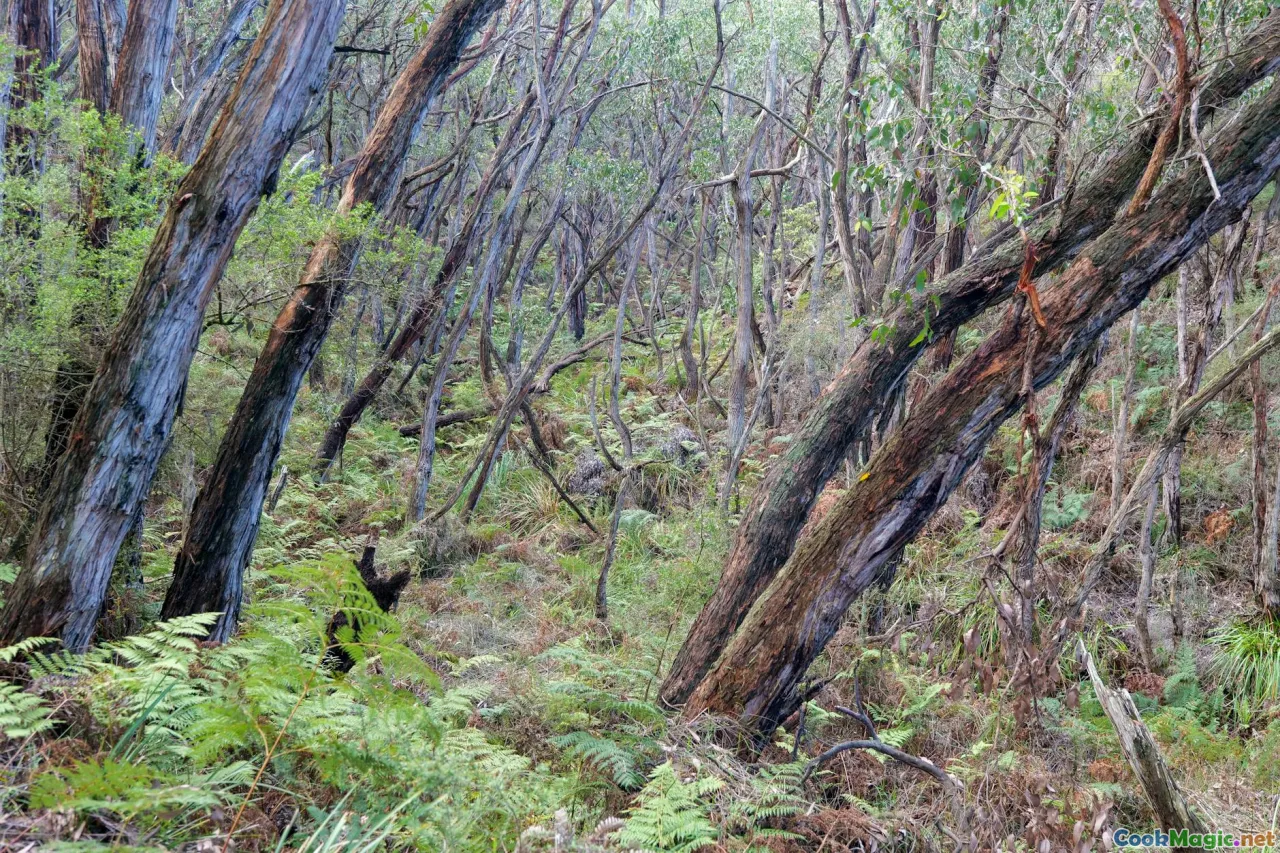 \n- Te Puia, Rotorua: Hāngi paired with kapa haka performance, set among geysers and steaming vents. A curated, polished experience with geothermal flair.\n- Mitai Māori Village, Rotorua: A night-time experience that includes a waka arrival on a lit stream and a classic hāngi meal.\n- Whakarewarewa Village: Meet guides who live among the geothermal features and taste corn cooked in boiling pools alongside hāngi.\n- Te Hana Te Ao Marama, north of Auckland: Cultural performance and hāngi experiences that bring history to life.\n- Community fundraisers: Keep an eye on school newsletters, sports clubs, and marae notices. Some of the most memorable hāngi meals arrive wrapped in newspaper from a trestle table on a netball court.\n- Matariki events: Many communities mark the Māori new year with public hāngi. The kōrero shared around these meals is as nourishing as the kai.\nIf you are a visitor, approach with respect. Hāngi is food, yes; but it is also story, welcome, and sometimes grief and remembrance. Pay attention to what is being shared beyond the plate.\n\n## A cook’s notes on flavor: seasoning to support, not smother\n
\n- Te Puia, Rotorua: Hāngi paired with kapa haka performance, set among geysers and steaming vents. A curated, polished experience with geothermal flair.\n- Mitai Māori Village, Rotorua: A night-time experience that includes a waka arrival on a lit stream and a classic hāngi meal.\n- Whakarewarewa Village: Meet guides who live among the geothermal features and taste corn cooked in boiling pools alongside hāngi.\n- Te Hana Te Ao Marama, north of Auckland: Cultural performance and hāngi experiences that bring history to life.\n- Community fundraisers: Keep an eye on school newsletters, sports clubs, and marae notices. Some of the most memorable hāngi meals arrive wrapped in newspaper from a trestle table on a netball court.\n- Matariki events: Many communities mark the Māori new year with public hāngi. The kōrero shared around these meals is as nourishing as the kai.\nIf you are a visitor, approach with respect. Hāngi is food, yes; but it is also story, welcome, and sometimes grief and remembrance. Pay attention to what is being shared beyond the plate.\n\n## A cook’s notes on flavor: seasoning to support, not smother\n \nHāngi’s palette is elemental: sweet, savory, smoky-earth. Seasoning should complement rather than repaint.\n- Salt is foundational. Dry-brine meats overnight with 1.5% salt by weight. Vegetables can take more salt than you expect; the steam environment mutes salinity slightly.\n- Native herbs: Kawakawa, with its eucalyptus-mint warmth, and horopito, with peppery bite, are excellent in moderation. Tuck whole leaves in; ground powder can be aggressive.\n- Citrus: Lemon zest or halves tucked in with chicken give brightness without overtaking the profile.\n- Honey: A thin glaze of manuka honey on pork can deepen the caramel note. Too much becomes lacquer that slides off in steam.\n- Smoke: Let the wood speak. Manuka’s honeyed smoke is gentle. Kānuka is similar. Avoid strong mesquite-like woods that can shout.\nThe best hāngi I have eaten tasted like itself first and a spice blend second.\n\n## Troubleshooting: when things go sideways\n
\nHāngi’s palette is elemental: sweet, savory, smoky-earth. Seasoning should complement rather than repaint.\n- Salt is foundational. Dry-brine meats overnight with 1.5% salt by weight. Vegetables can take more salt than you expect; the steam environment mutes salinity slightly.\n- Native herbs: Kawakawa, with its eucalyptus-mint warmth, and horopito, with peppery bite, are excellent in moderation. Tuck whole leaves in; ground powder can be aggressive.\n- Citrus: Lemon zest or halves tucked in with chicken give brightness without overtaking the profile.\n- Honey: A thin glaze of manuka honey on pork can deepen the caramel note. Too much becomes lacquer that slides off in steam.\n- Smoke: Let the wood speak. Manuka’s honeyed smoke is gentle. Kānuka is similar. Avoid strong mesquite-like woods that can shout.\nThe best hāngi I have eaten tasted like itself first and a spice blend second.\n\n## Troubleshooting: when things go sideways\n \n- Steam leak mid-cook: Quickly patch with a soaked sack and extra soil. Do not open the oven.\n- Rain: Build a tarpaulin tent above the pit, high enough to avoid heat damage. The dome of soil should resist light rain; heavy rain risks cooling too fast.\n- Overcooking vegetables: Place vegetables further from the stone bed next time, or cut larger chunks. Cabbage can handle the heat; potatoes cannot if they are small.\n- Pale flavors: You may have underfired the stones or overwatered the seals. Fire longer, reduce initial moisture, and ensure the first minutes of cooking are high heat to lock in aroma.\n- Dry meat: Possible leak or too few vegetables. Ensure abundant moisture sources in the baskets and a perfect seal.\nWrite notes after each hāngi — soil, wood, weather, timing. Good cooks keep logs as faithfully as bakers.\n\n## Leftovers and second-day magic\n
\n- Steam leak mid-cook: Quickly patch with a soaked sack and extra soil. Do not open the oven.\n- Rain: Build a tarpaulin tent above the pit, high enough to avoid heat damage. The dome of soil should resist light rain; heavy rain risks cooling too fast.\n- Overcooking vegetables: Place vegetables further from the stone bed next time, or cut larger chunks. Cabbage can handle the heat; potatoes cannot if they are small.\n- Pale flavors: You may have underfired the stones or overwatered the seals. Fire longer, reduce initial moisture, and ensure the first minutes of cooking are high heat to lock in aroma.\n- Dry meat: Possible leak or too few vegetables. Ensure abundant moisture sources in the baskets and a perfect seal.\nWrite notes after each hāngi — soil, wood, weather, timing. Good cooks keep logs as faithfully as bakers.\n\n## Leftovers and second-day magic\n \nHāngi leftovers are treasure. The textures on day two change from yielding to plush, and the flavors gain roundness.\n- Bubble and squeak with a Kiwi twist: Chop leftover kūmara, potatoes, and cabbage; fry in butter until crisp at the edges. Fold in shredded lamb. Serve with a fried egg and a spoon of mint sauce.\n- Hāngi hash tacos: Warm rewena or soft flatbreads. Fill with pulled pork, cabbage, and a squeeze of lemon. A scattering of chopped watercress brightens it all.\n- Soup starter: Simmer leftover bones with onion and bay for a rich broth. Add chopped pumpkin and kūmara for a silky, smoky soup. A touch of cream optional.\n- Fritters: Mash kūmara and pumpkin, mix with flour, egg, and herbs, and pan-fry golden. Serve with kawakawa yogurt.\nLeftovers carry the memory of the gathering into the next day’s lunchbox. They are a way to linger at the table even after the trestles have been folded away.\n\n## Etiquette and emotion: the human side of hāngi\n
\nHāngi leftovers are treasure. The textures on day two change from yielding to plush, and the flavors gain roundness.\n- Bubble and squeak with a Kiwi twist: Chop leftover kūmara, potatoes, and cabbage; fry in butter until crisp at the edges. Fold in shredded lamb. Serve with a fried egg and a spoon of mint sauce.\n- Hāngi hash tacos: Warm rewena or soft flatbreads. Fill with pulled pork, cabbage, and a squeeze of lemon. A scattering of chopped watercress brightens it all.\n- Soup starter: Simmer leftover bones with onion and bay for a rich broth. Add chopped pumpkin and kūmara for a silky, smoky soup. A touch of cream optional.\n- Fritters: Mash kūmara and pumpkin, mix with flour, egg, and herbs, and pan-fry golden. Serve with kawakawa yogurt.\nLeftovers carry the memory of the gathering into the next day’s lunchbox. They are a way to linger at the table even after the trestles have been folded away.\n\n## Etiquette and emotion: the human side of hāngi\n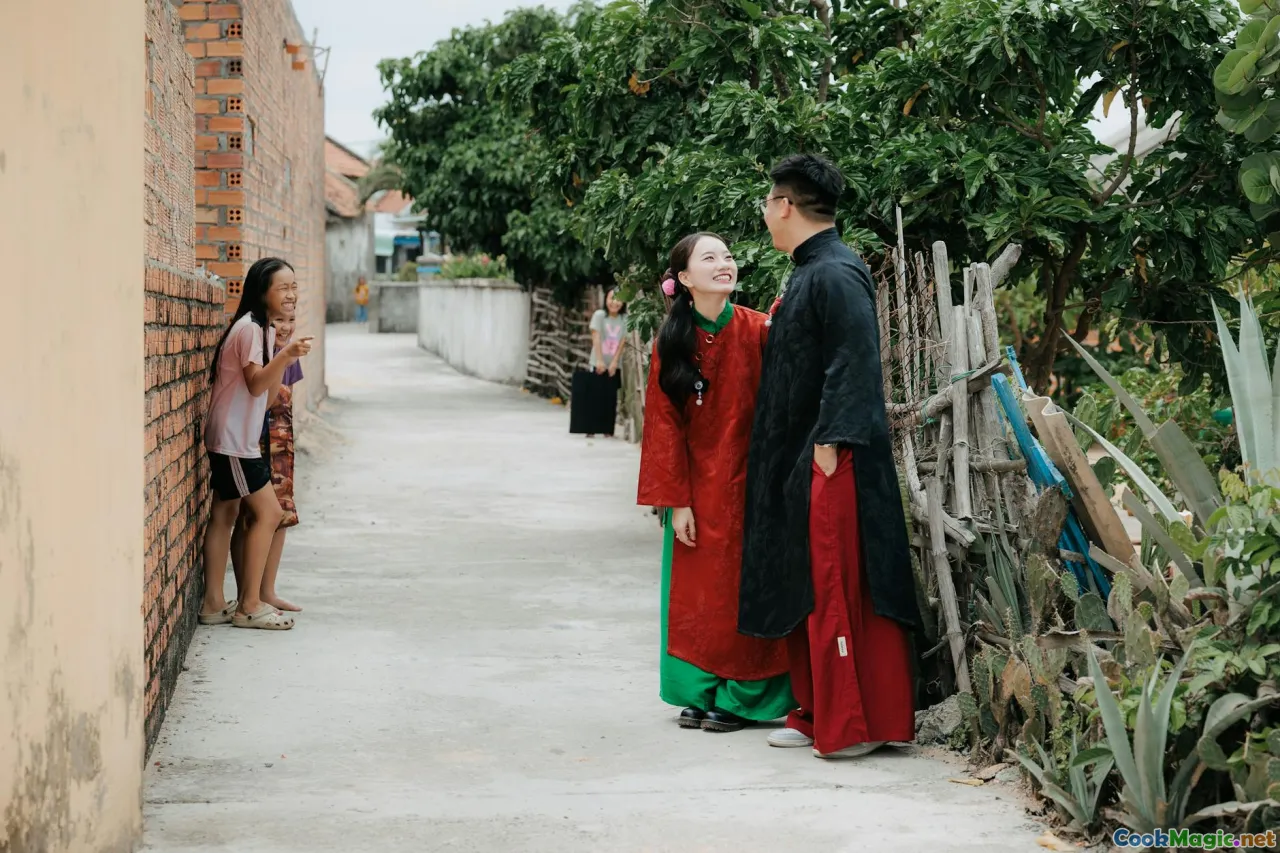 \nFood tells people who we are to them. A hāngi is a gift of time and effort, and the etiquette around it protects that generosity.\n- Offer to help. Peel, carry, patch, pour tea. The work is the ritual; joining the work is joining the ritual.\n- Accept guidance. Every marae and family has its choreography. If someone says not to step over the pit or not to place items on a certain table, follow without question.\n- Eat widely. Try the cabbage, even if you think you do not like cabbage. The cooks have coaxed magic from humble things.\n- Blessings and stories matter. Listen to the karakia and the kōrero. The meal begins there.\n- Gratitude is the closing note. Wash the sacks, fold the tarpaulin, scrape the shovels clean. Leave the site better than you found it.\n\nAnd then there is the emotion that always surprises me: the quiet wave when the oven opens and the hot air kisses your face. It smells like rain on hot rocks, like kitchens where a grandmother hums under her breath, like the unhurried afternoons of childhood. Hāngi is a technique, yes, but it is also a place you return to.\n\n## A hāngi for the seasons: Matariki and beyond\n
\nFood tells people who we are to them. A hāngi is a gift of time and effort, and the etiquette around it protects that generosity.\n- Offer to help. Peel, carry, patch, pour tea. The work is the ritual; joining the work is joining the ritual.\n- Accept guidance. Every marae and family has its choreography. If someone says not to step over the pit or not to place items on a certain table, follow without question.\n- Eat widely. Try the cabbage, even if you think you do not like cabbage. The cooks have coaxed magic from humble things.\n- Blessings and stories matter. Listen to the karakia and the kōrero. The meal begins there.\n- Gratitude is the closing note. Wash the sacks, fold the tarpaulin, scrape the shovels clean. Leave the site better than you found it.\n\nAnd then there is the emotion that always surprises me: the quiet wave when the oven opens and the hot air kisses your face. It smells like rain on hot rocks, like kitchens where a grandmother hums under her breath, like the unhurried afternoons of childhood. Hāngi is a technique, yes, but it is also a place you return to.\n\n## A hāngi for the seasons: Matariki and beyond\n \nMatariki, the rising of the Pleiades in winter, is a time to honor those who have passed, to take stock, and to plan for seasons ahead. On frosty mornings, the warmth of a hāngi pit feels especially right. The vegetables are at their sweetest in the cold: kūmara full of stored sun, pumpkins mellow and nutty, cabbage dense and crisp before it softens in steam.\nSummer hāngi feels different — barefoot kids, tomatoes on the side, corn tucked into the baskets, the scent of cut grass. Spring brings lamb and watercress salad. Autumn weighs the table with pumpkins and apples, with the itch to gather before the weather turns.\nAcross seasons, the hāngi’s constancy is comfort. The method changes little; the expression changes a lot.\n\n## A cook’s checklist for first-timers\n
\nMatariki, the rising of the Pleiades in winter, is a time to honor those who have passed, to take stock, and to plan for seasons ahead. On frosty mornings, the warmth of a hāngi pit feels especially right. The vegetables are at their sweetest in the cold: kūmara full of stored sun, pumpkins mellow and nutty, cabbage dense and crisp before it softens in steam.\nSummer hāngi feels different — barefoot kids, tomatoes on the side, corn tucked into the baskets, the scent of cut grass. Spring brings lamb and watercress salad. Autumn weighs the table with pumpkins and apples, with the itch to gather before the weather turns.\nAcross seasons, the hāngi’s constancy is comfort. The method changes little; the expression changes a lot.\n\n## A cook’s checklist for first-timers\n \n- Visit a hāngi first. Attend a community event or a cultural village. Watch, listen, ask questions respectfully.\n- Assemble your crew. Four to six people makes light work. Assign roles: fire boss, packing lead, seal checker, server.\n- Practice fire management. Get the stones hot enough. Err on the side of more time burning and more wood.\n- Pack with intention. Heavy veg on bottom, meats above, leaves cushioning everything.\n- Seal with care. Overlap wet sacks. Dome the soil. Patch leaks.\n- Keep time. Trust the process. Do not peek.\n- Probe and rest. Check temperatures, rest meats, serve generous plates.\n- Clean and record. Tidy the site, store equipment, note what worked and what to adjust.\nIf in doubt, ask someone with experience to oversee your first attempt. Knowledge has always passed this way.\n\n## Final thoughts: putting down roots and lifting the lid\n
\n- Visit a hāngi first. Attend a community event or a cultural village. Watch, listen, ask questions respectfully.\n- Assemble your crew. Four to six people makes light work. Assign roles: fire boss, packing lead, seal checker, server.\n- Practice fire management. Get the stones hot enough. Err on the side of more time burning and more wood.\n- Pack with intention. Heavy veg on bottom, meats above, leaves cushioning everything.\n- Seal with care. Overlap wet sacks. Dome the soil. Patch leaks.\n- Keep time. Trust the process. Do not peek.\n- Probe and rest. Check temperatures, rest meats, serve generous plates.\n- Clean and record. Tidy the site, store equipment, note what worked and what to adjust.\nIf in doubt, ask someone with experience to oversee your first attempt. Knowledge has always passed this way.\n\n## Final thoughts: putting down roots and lifting the lid\n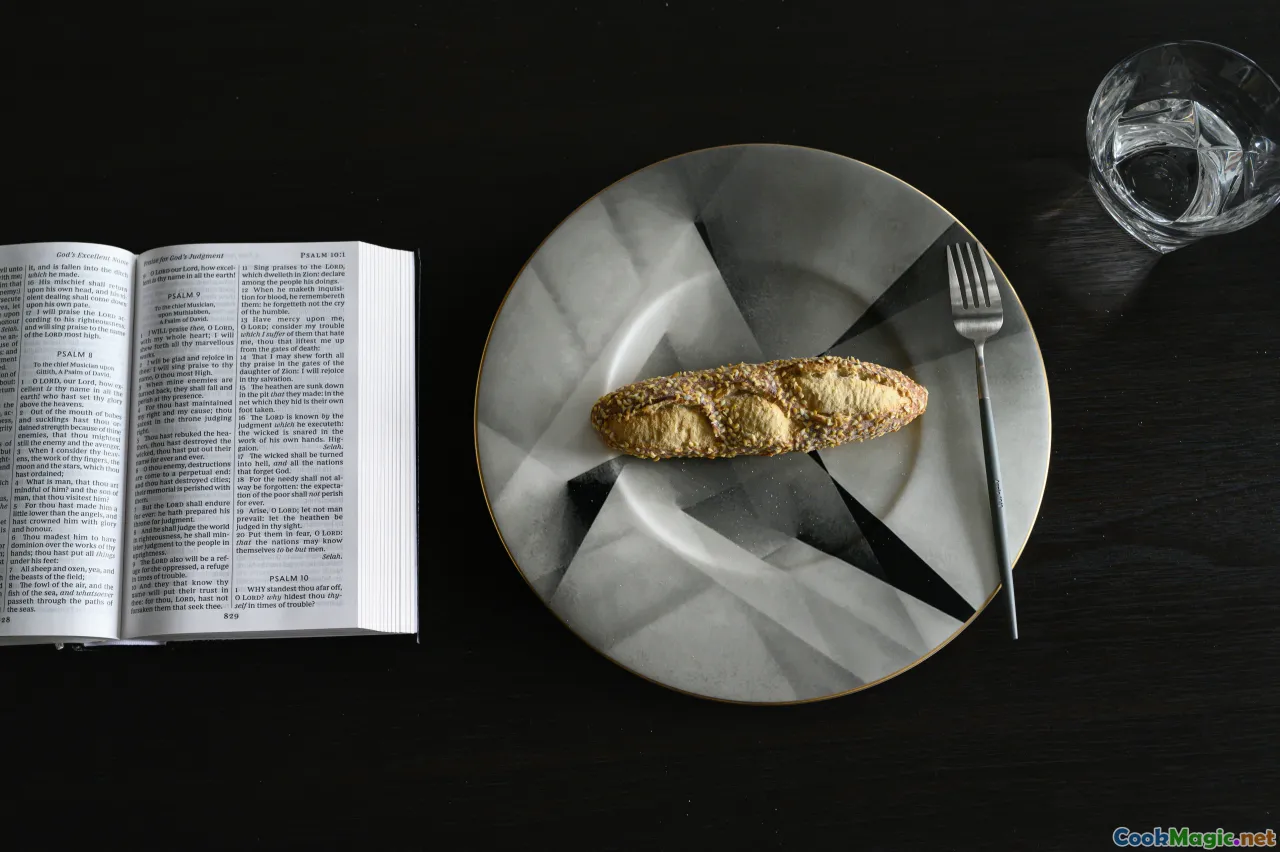 \nI have cooked on induction hobs that hum like spacecraft and in smokers that can hold 110 C within a hair for twelve hours. They have their satisfactions. But a hāngi engages something else — the part of cooking that is less about mastery and more about trust. You measure time by the arc of the sun, heat by the blush of stones, readiness by the tenor of a hiss under soil. You do not plate with tweezers. You carry heavy baskets with friends. You adjust to wind and weather and, sometimes, to the advice of an elder who has done this more times than you could count.\n\nAt the end of a hāngi, when the steam clears and platters crowd the trestle tables, you see what the method really cooks: not just meat and vegetables, but the spaces between people. Laughter, memory, a child’s first bite of kūmara so sweet it makes their eyes go round. The taste of hāngi is delicious, but the flavor that lingers is belonging.\n\nIf you find yourself in Aotearoa with a chance to join a hāngi, say yes. Offer your hands. Learn how the stones should sound and the sacks should feel. And when the earth’s lid lifts and that first breath of warmth comes for you, breathe it in. You will carry it a long, long way.
\nI have cooked on induction hobs that hum like spacecraft and in smokers that can hold 110 C within a hair for twelve hours. They have their satisfactions. But a hāngi engages something else — the part of cooking that is less about mastery and more about trust. You measure time by the arc of the sun, heat by the blush of stones, readiness by the tenor of a hiss under soil. You do not plate with tweezers. You carry heavy baskets with friends. You adjust to wind and weather and, sometimes, to the advice of an elder who has done this more times than you could count.\n\nAt the end of a hāngi, when the steam clears and platters crowd the trestle tables, you see what the method really cooks: not just meat and vegetables, but the spaces between people. Laughter, memory, a child’s first bite of kūmara so sweet it makes their eyes go round. The taste of hāngi is delicious, but the flavor that lingers is belonging.\n\nIf you find yourself in Aotearoa with a chance to join a hāngi, say yes. Offer your hands. Learn how the stones should sound and the sacks should feel. And when the earth’s lid lifts and that first breath of warmth comes for you, breathe it in. You will carry it a long, long way.









